On March 8, I left Gonder for Debark, the first step on a trek to the Simien Mountains. The bus for this part of the journey was the worst I encountered in Ethiopia.
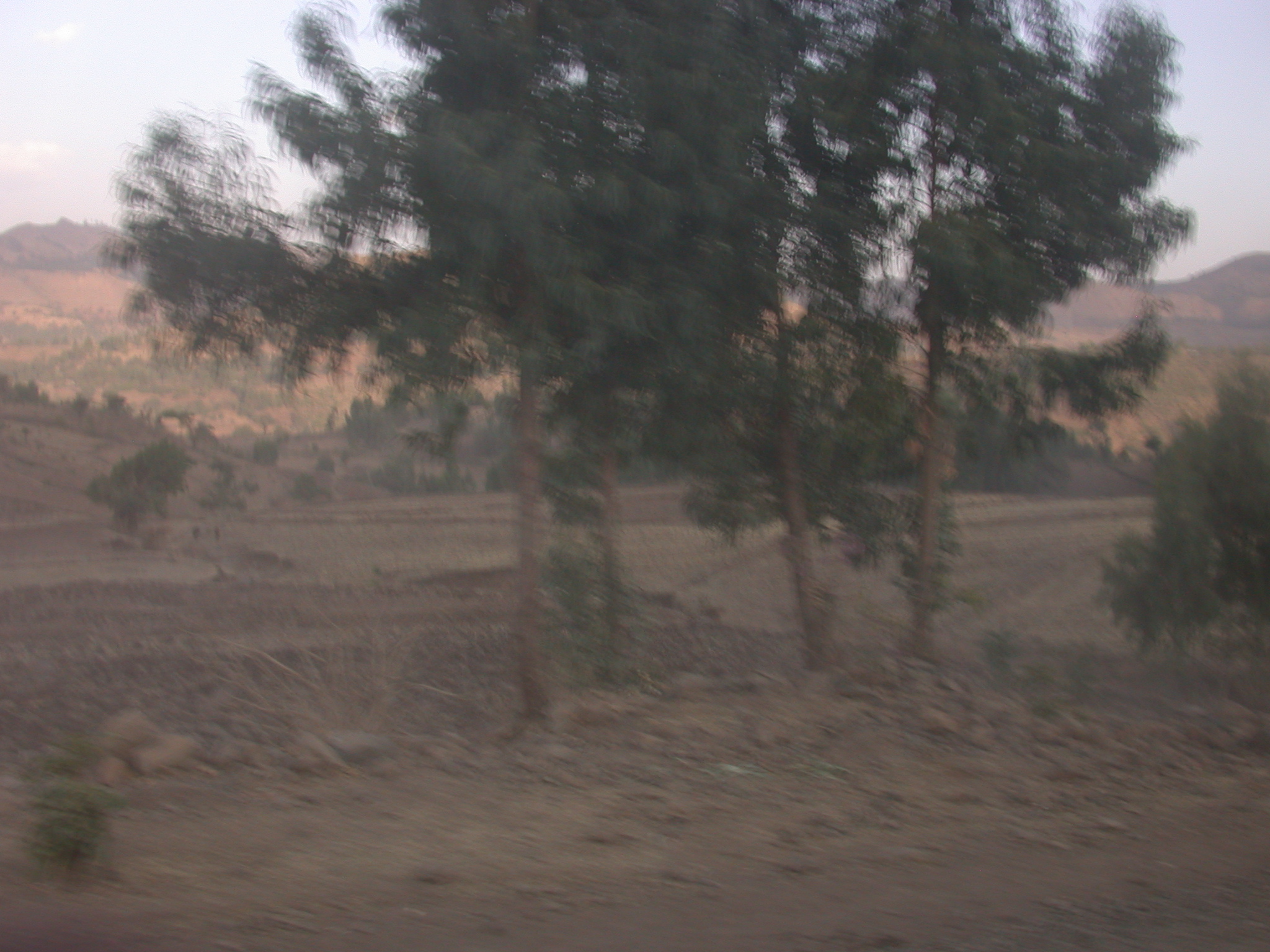
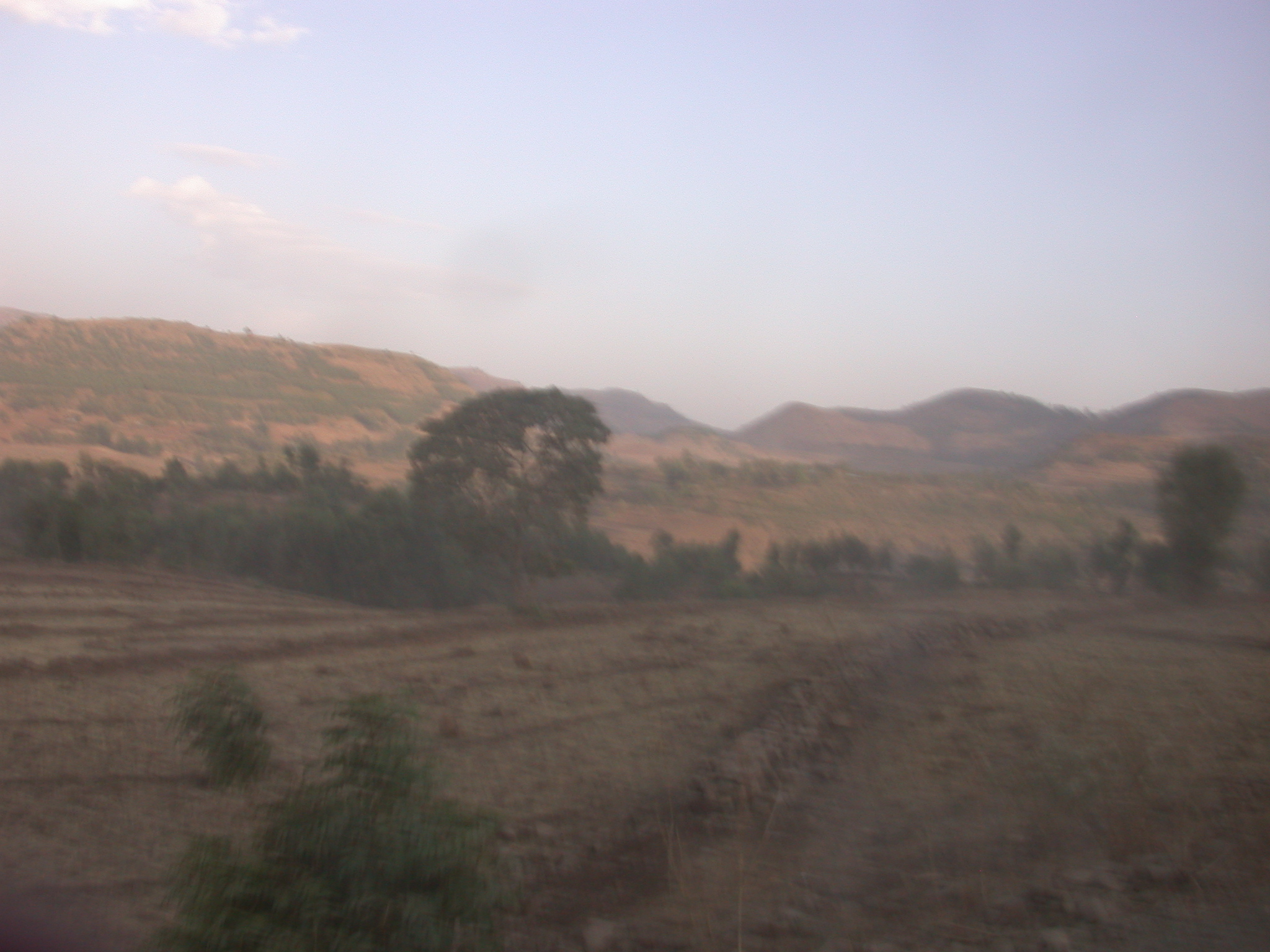
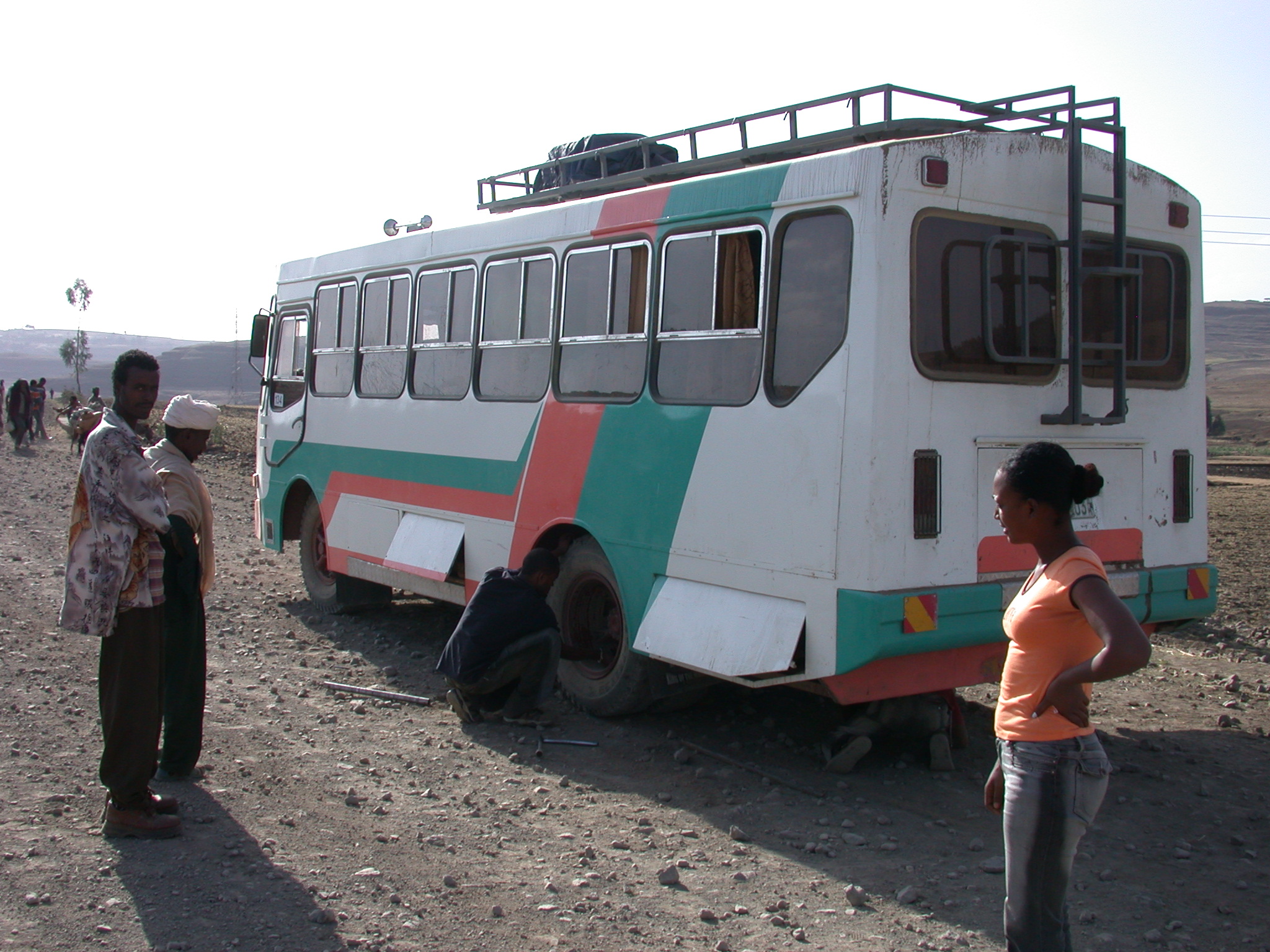
The gravel road was so bumpy that the bus shook so much I couldn’t see how it held together in one piece. Some bumps were so strong, they threw me a foot or more out of my seat! I learned new strategies to try to prevent damage to my already tender spine: when I felt a big bump coming, I lifted myself out of the seat by tightening my calf and thigh muscles. This eased the strain on my spine as I descended back into my seat. Then, the bus broke down. This time, they managed to fix it, so we didn’t have to wait for another bus to come along. We stopped in a beautiful village in the middle of nowhere and the locals were friendly.
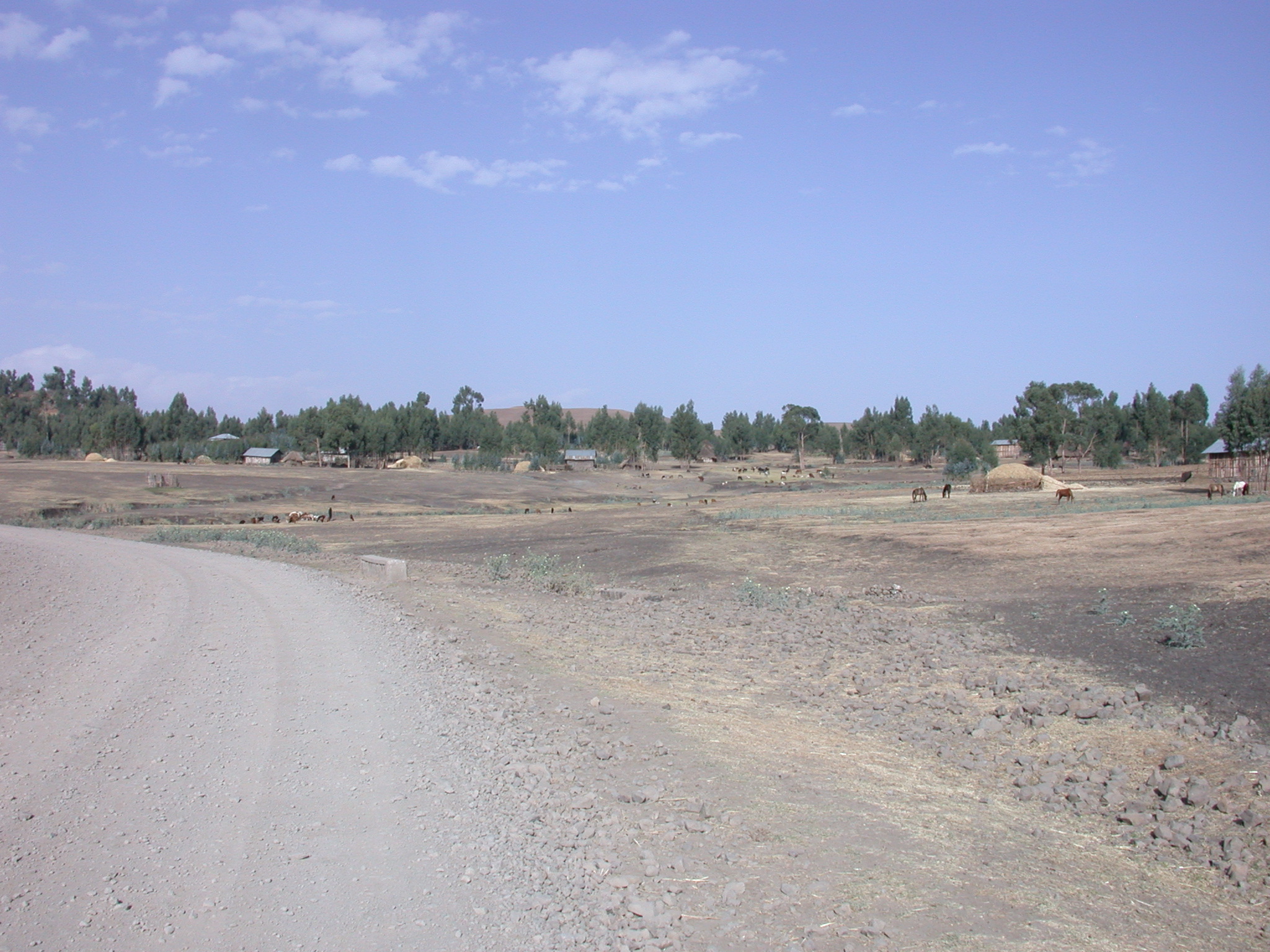
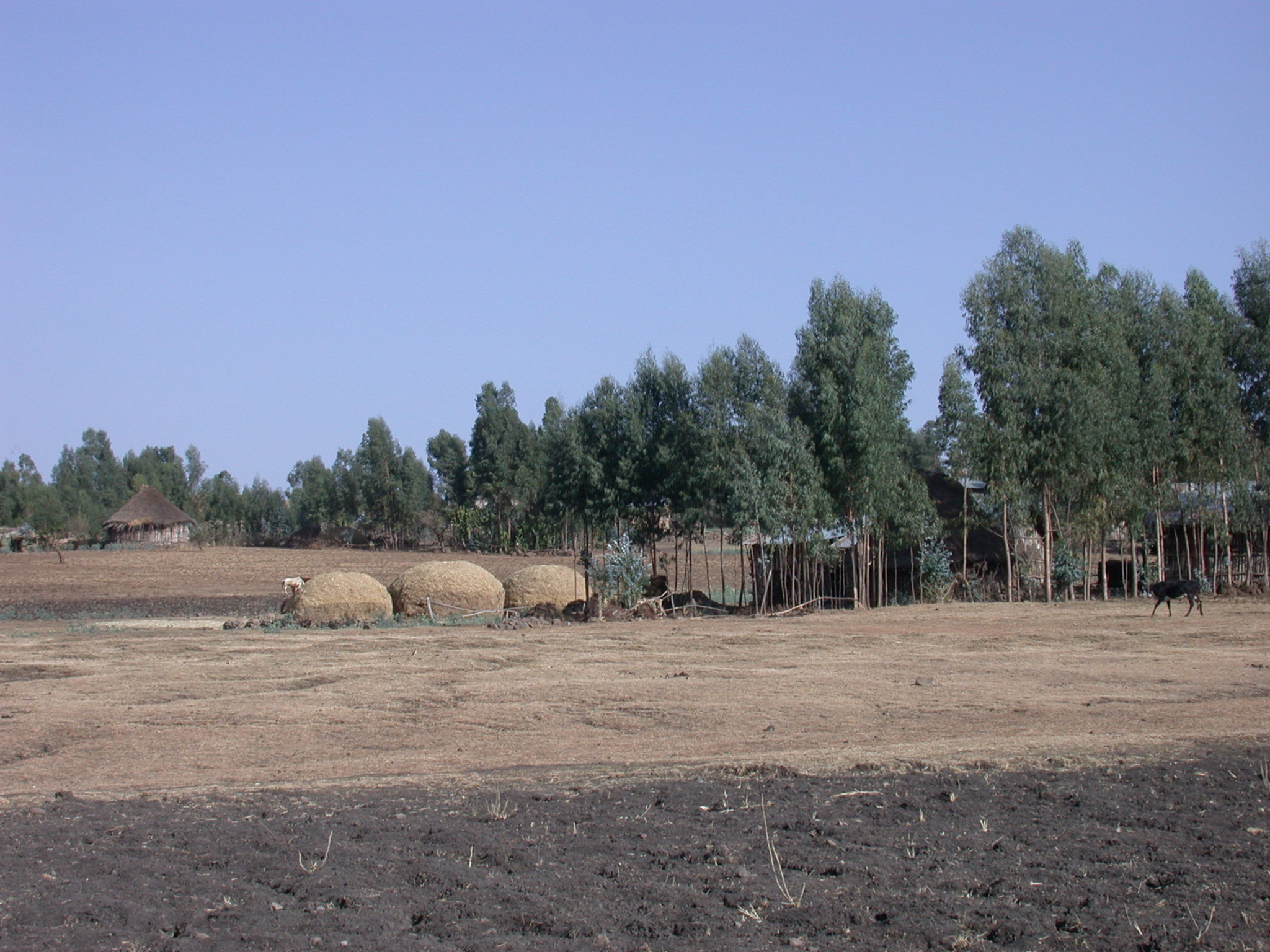
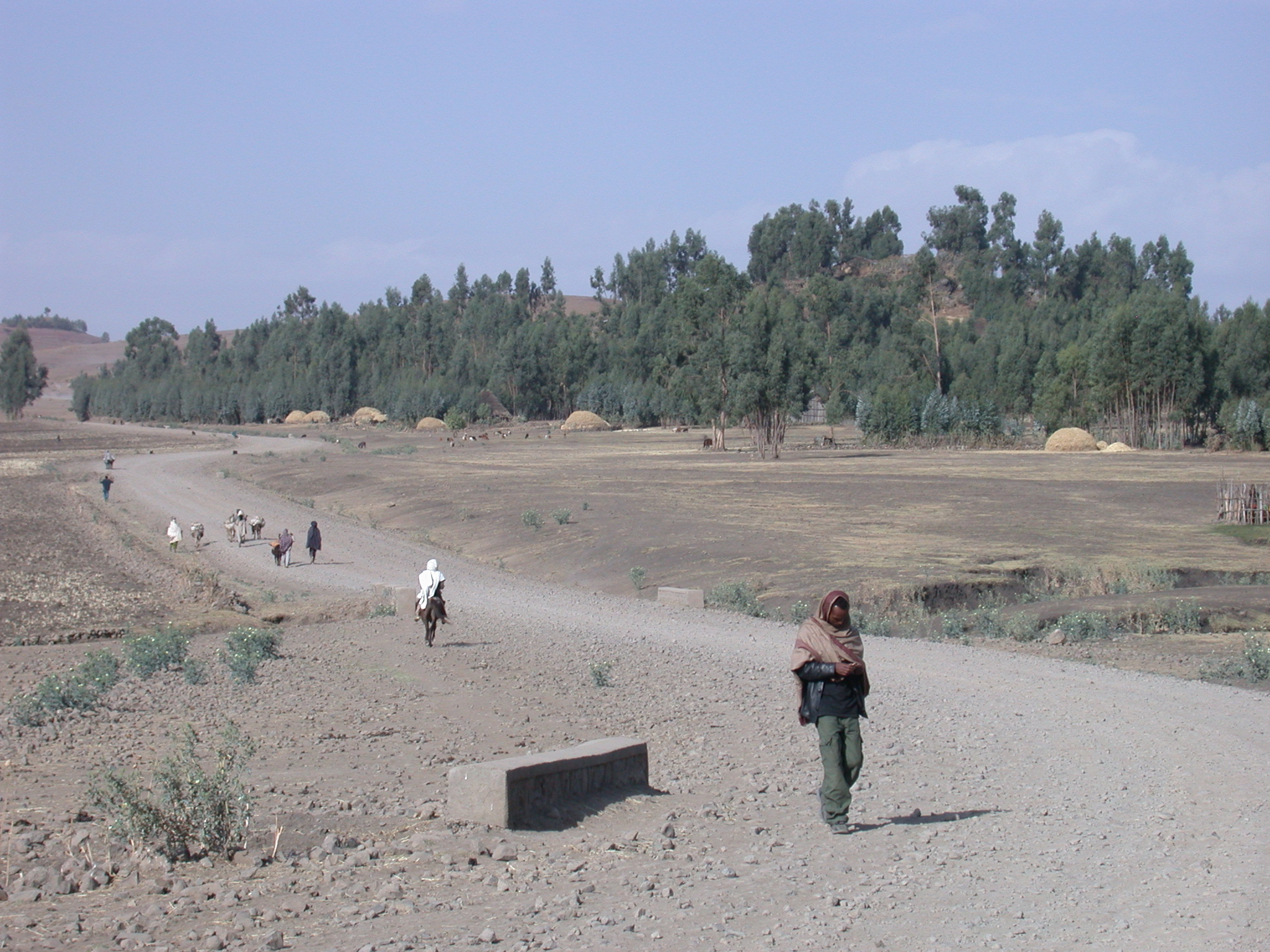
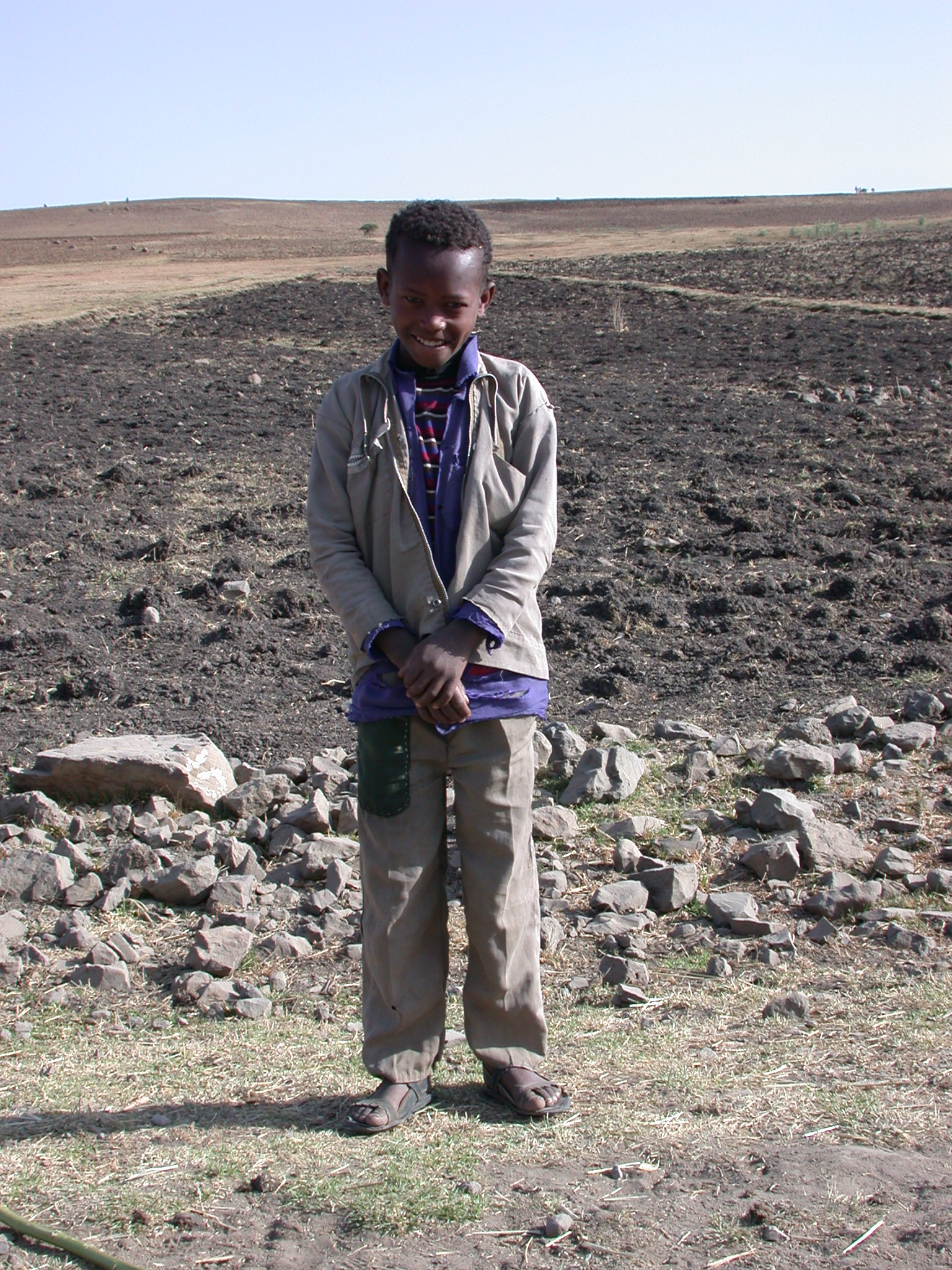

A women cooks injeera the traditional way and some children say “hi” in Debark. Then, there’s a statue of a Wallia ibex in the town square.

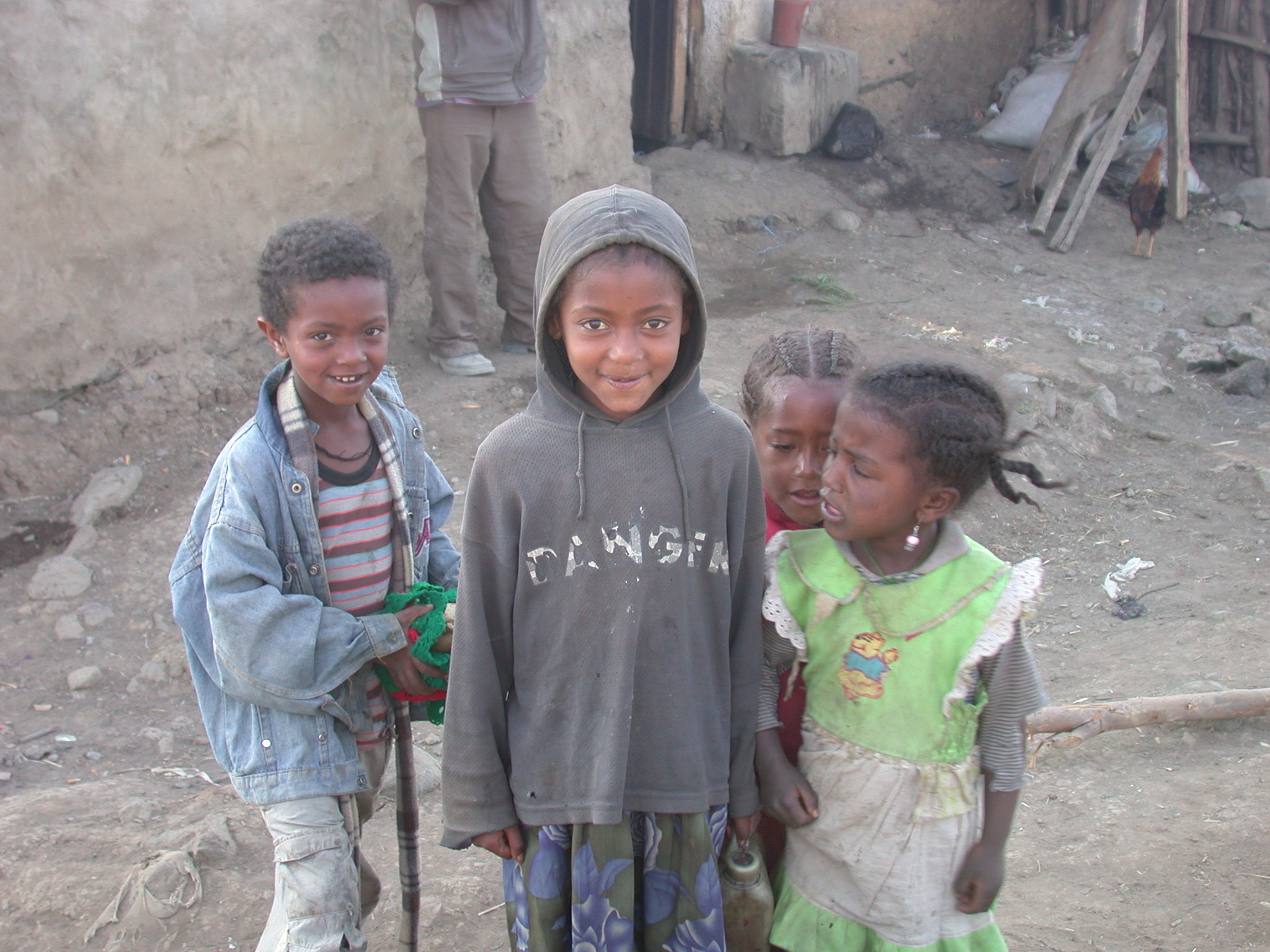
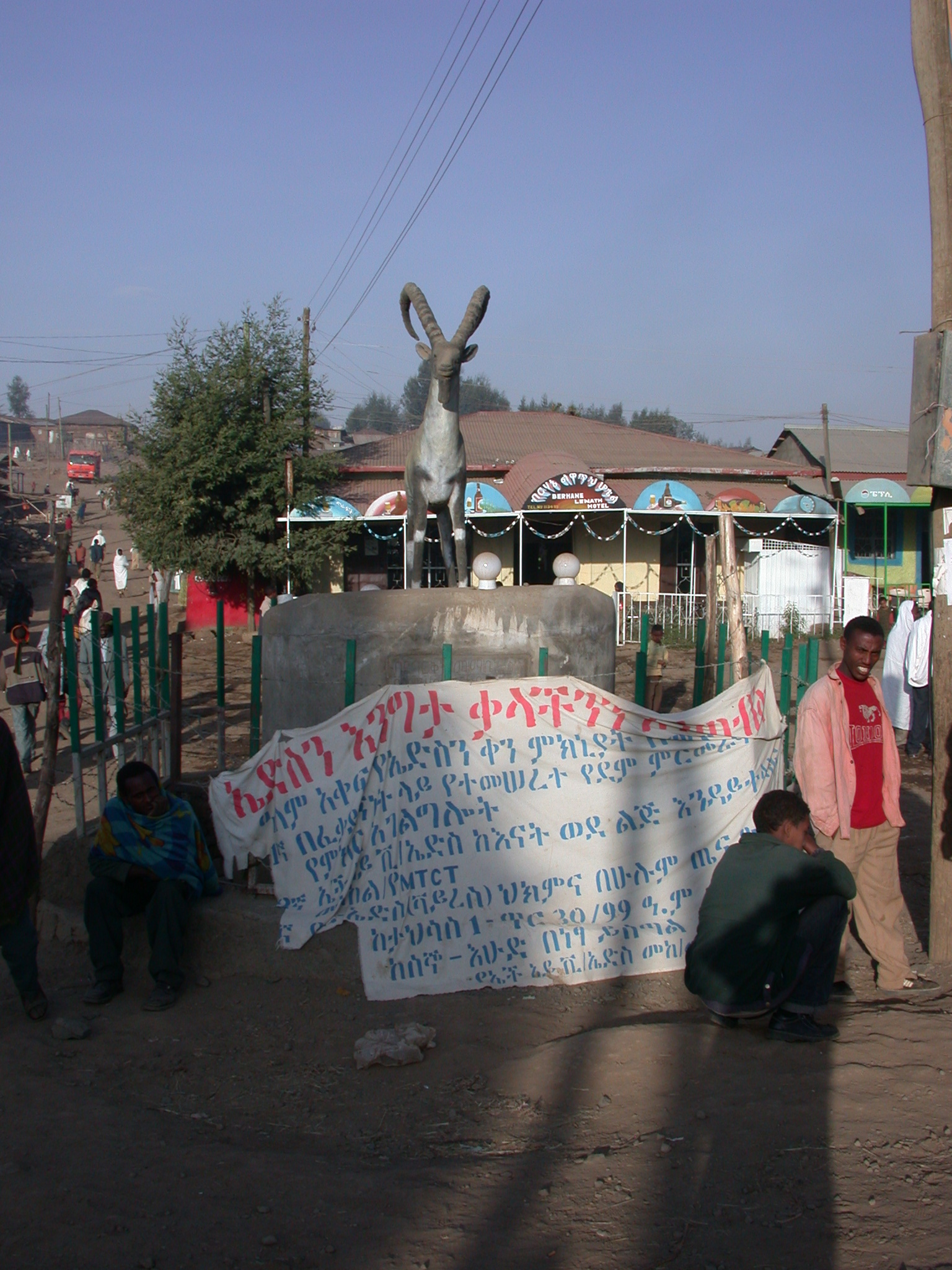
I stupidly drank the local thala, a sorghum beer probably diluted with local water. Ironically, I likely got sick from the water, not the beer. I spent the night of March 8 in the rather primitive Red Fox Hotel, which also served as a local dining and music hall.
For the trek, I planned a five-day excursion. I hired a scout with a gun (required because hungry locals could theoretically rob a rich trekking ferengi, although apparently it had never happened) plus a horse and a horse tender to carry my stuff. I didn’t realize I was getting sick until I had trekked halfway of the 5-7 hour hike from Debark to the Sankaber on March 9, the first camp in the Simien Mountains. The trek itself was beautiful.

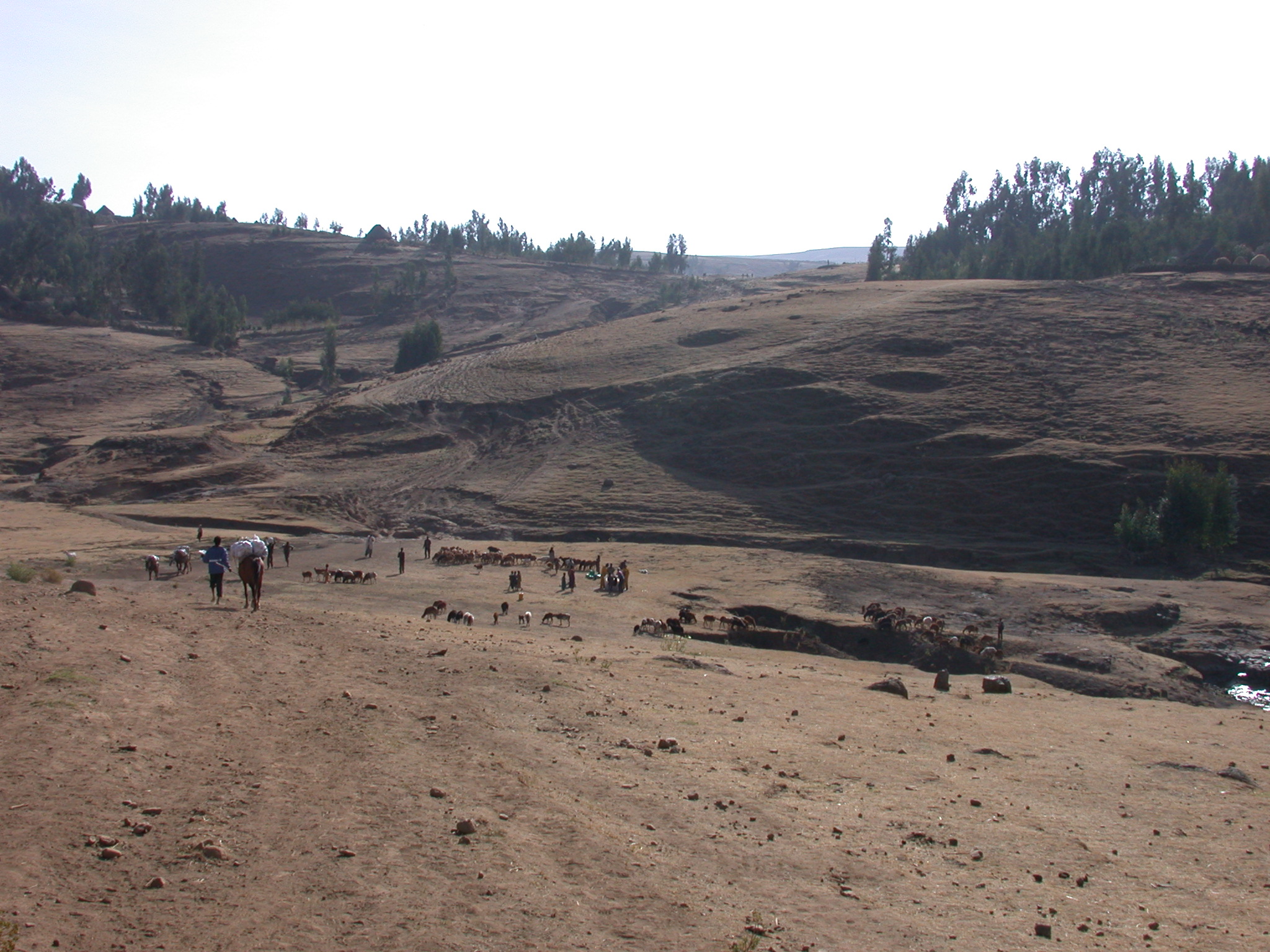
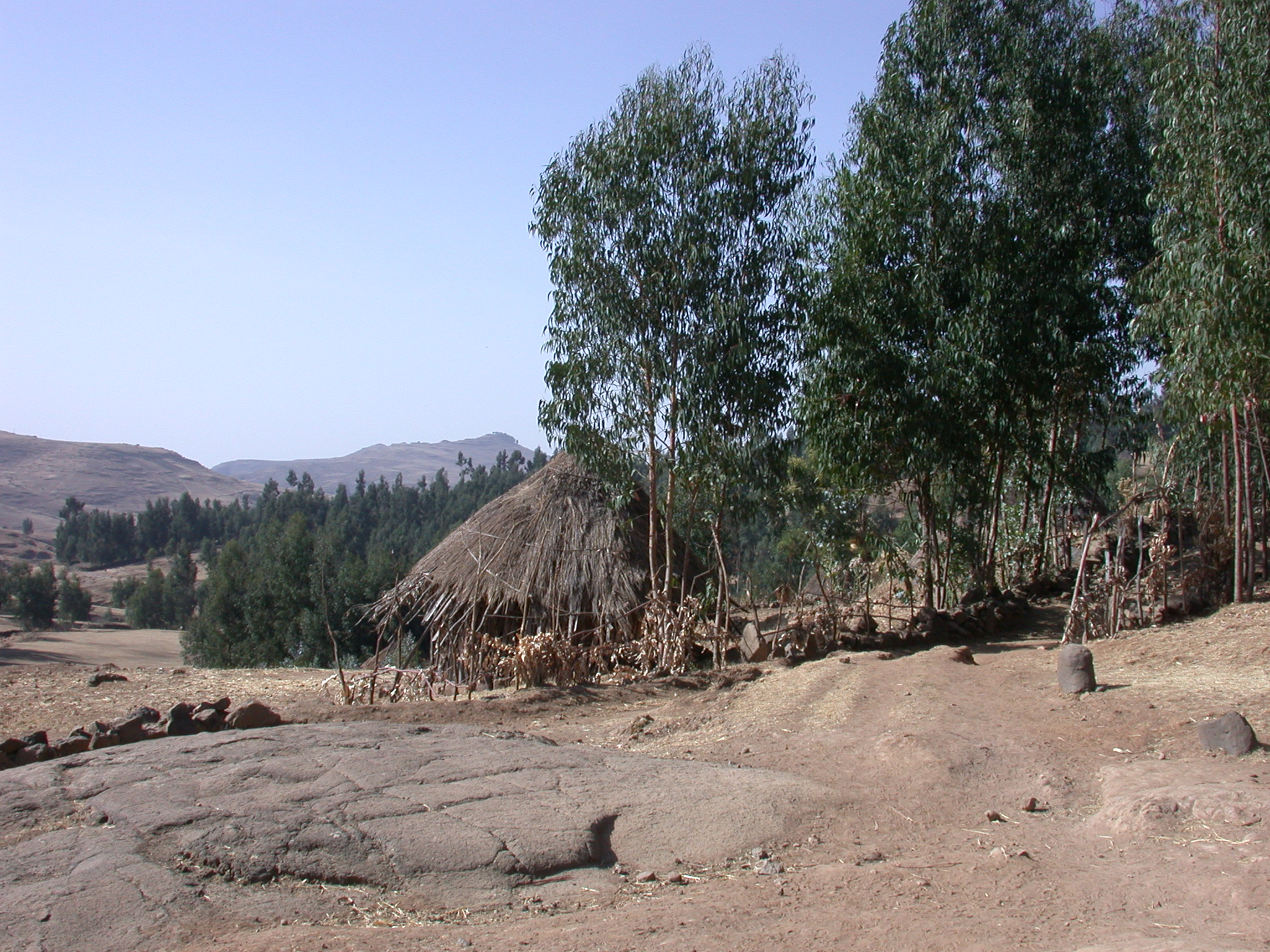
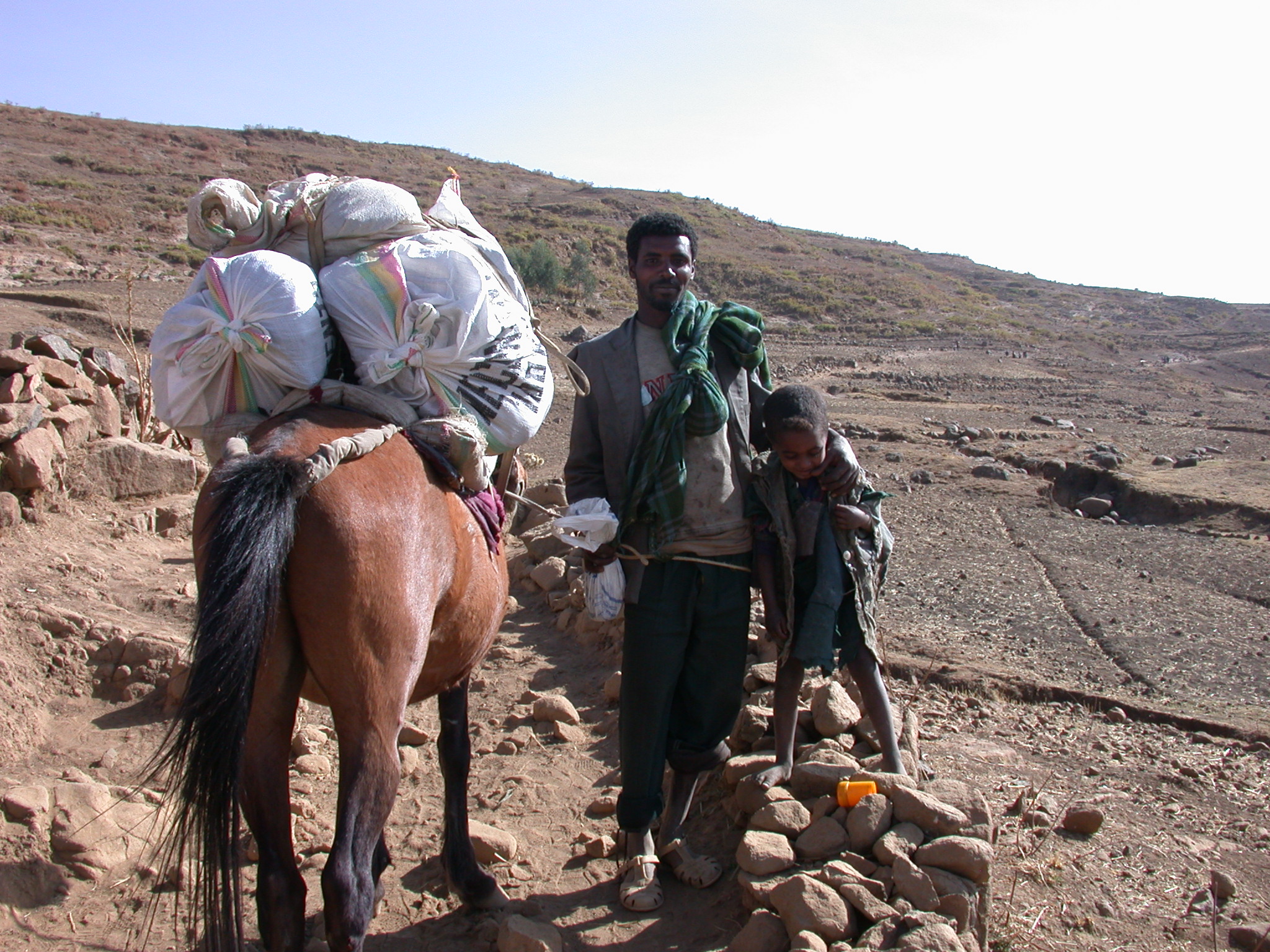
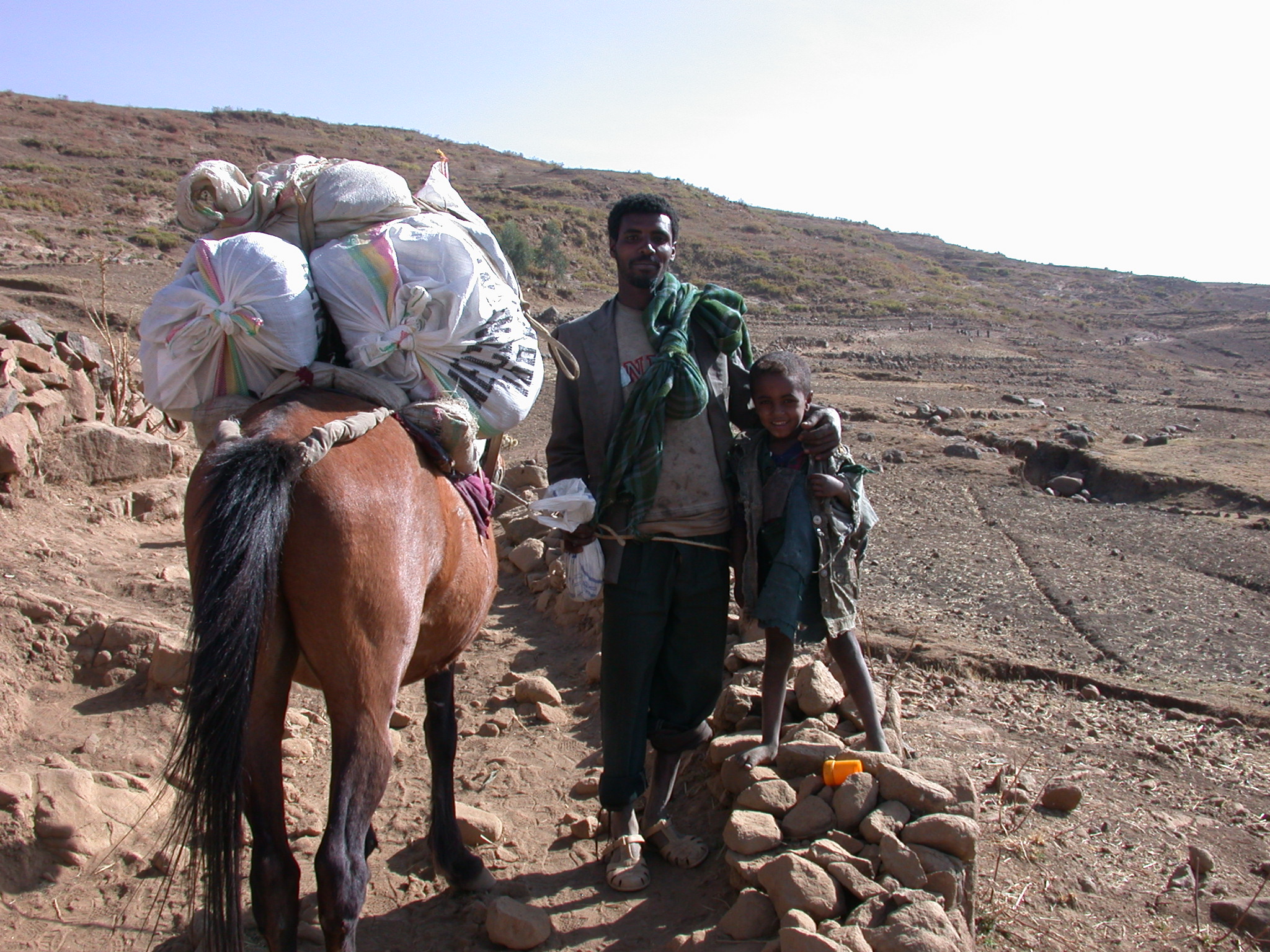
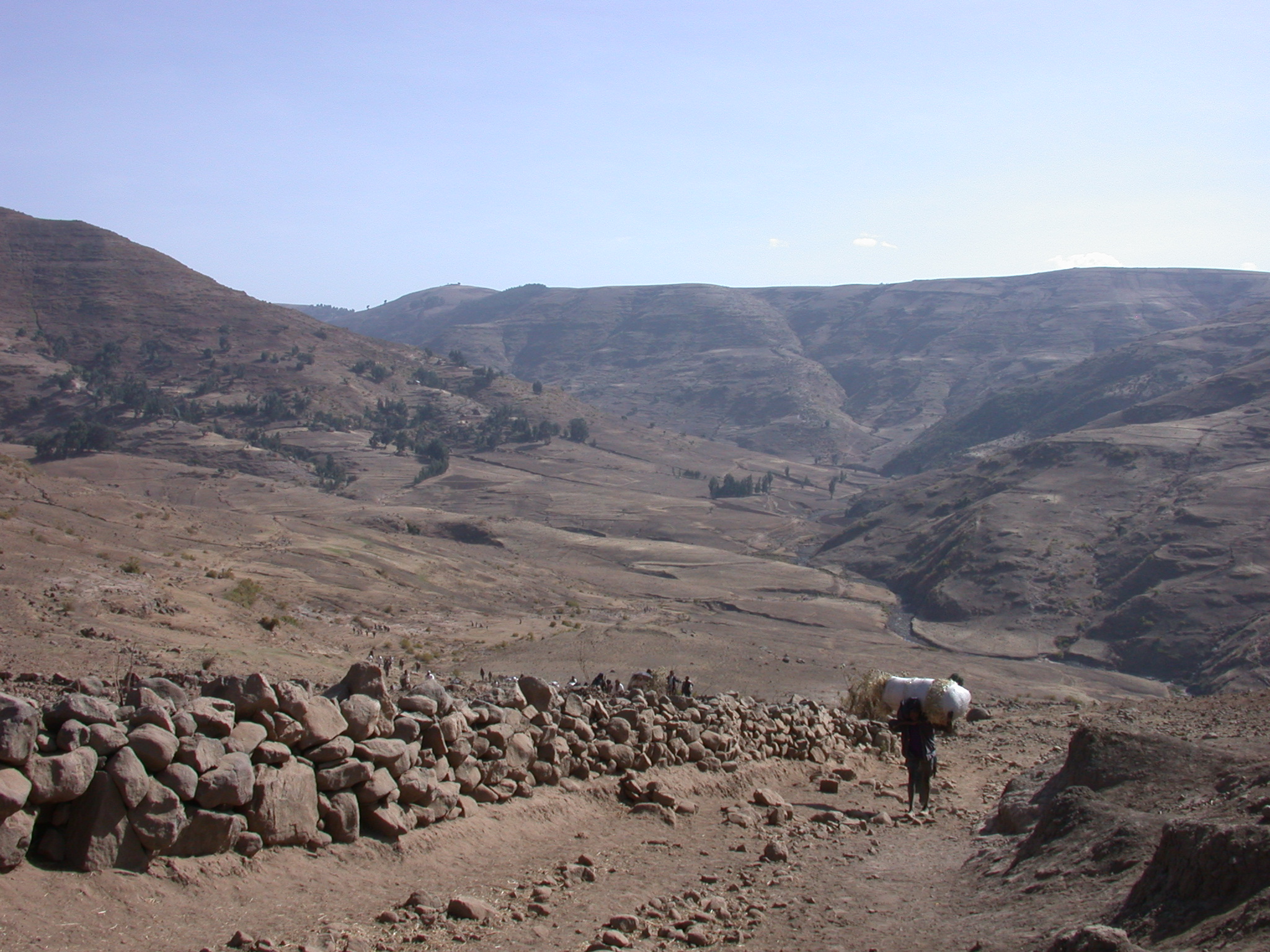
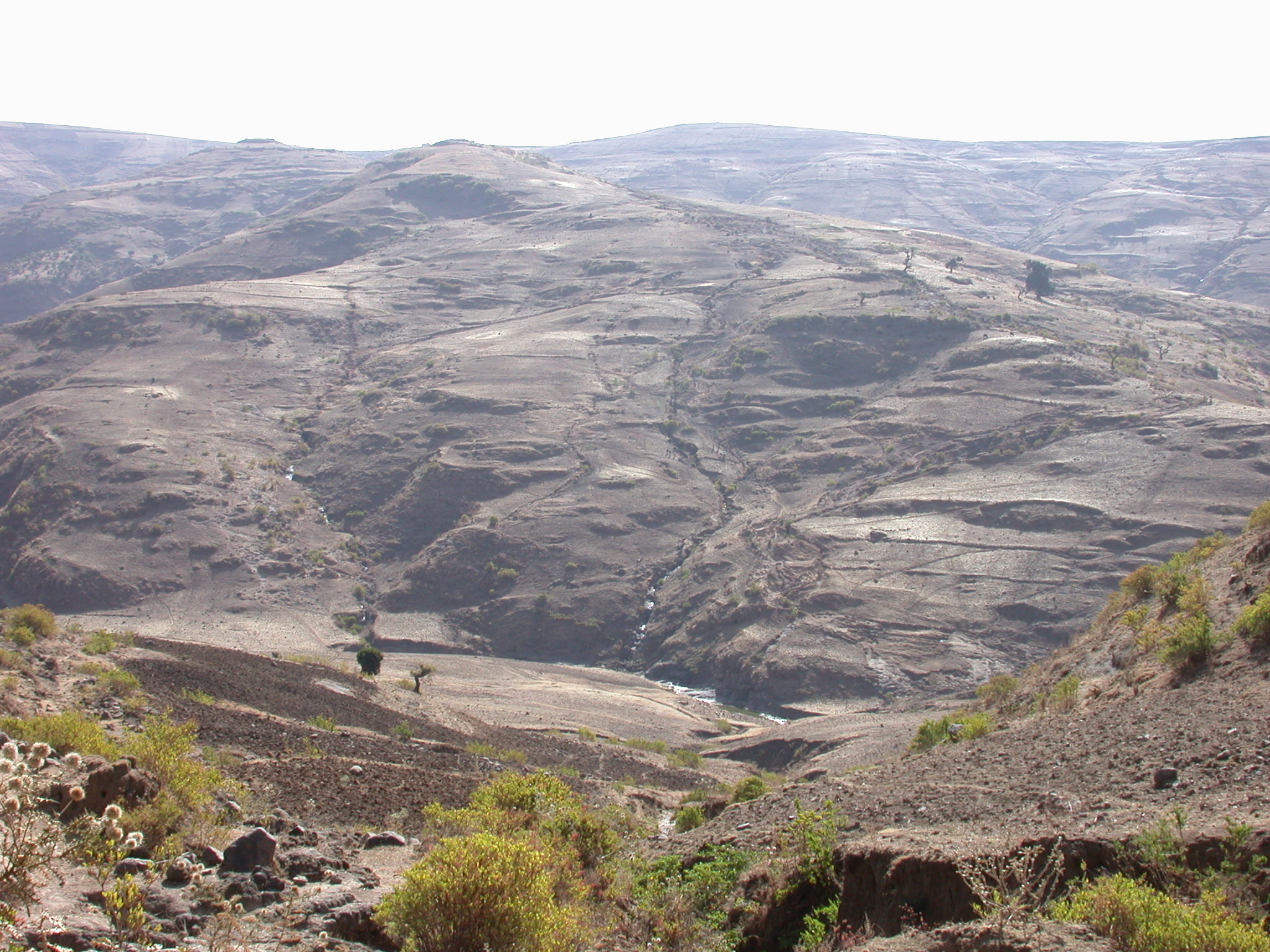
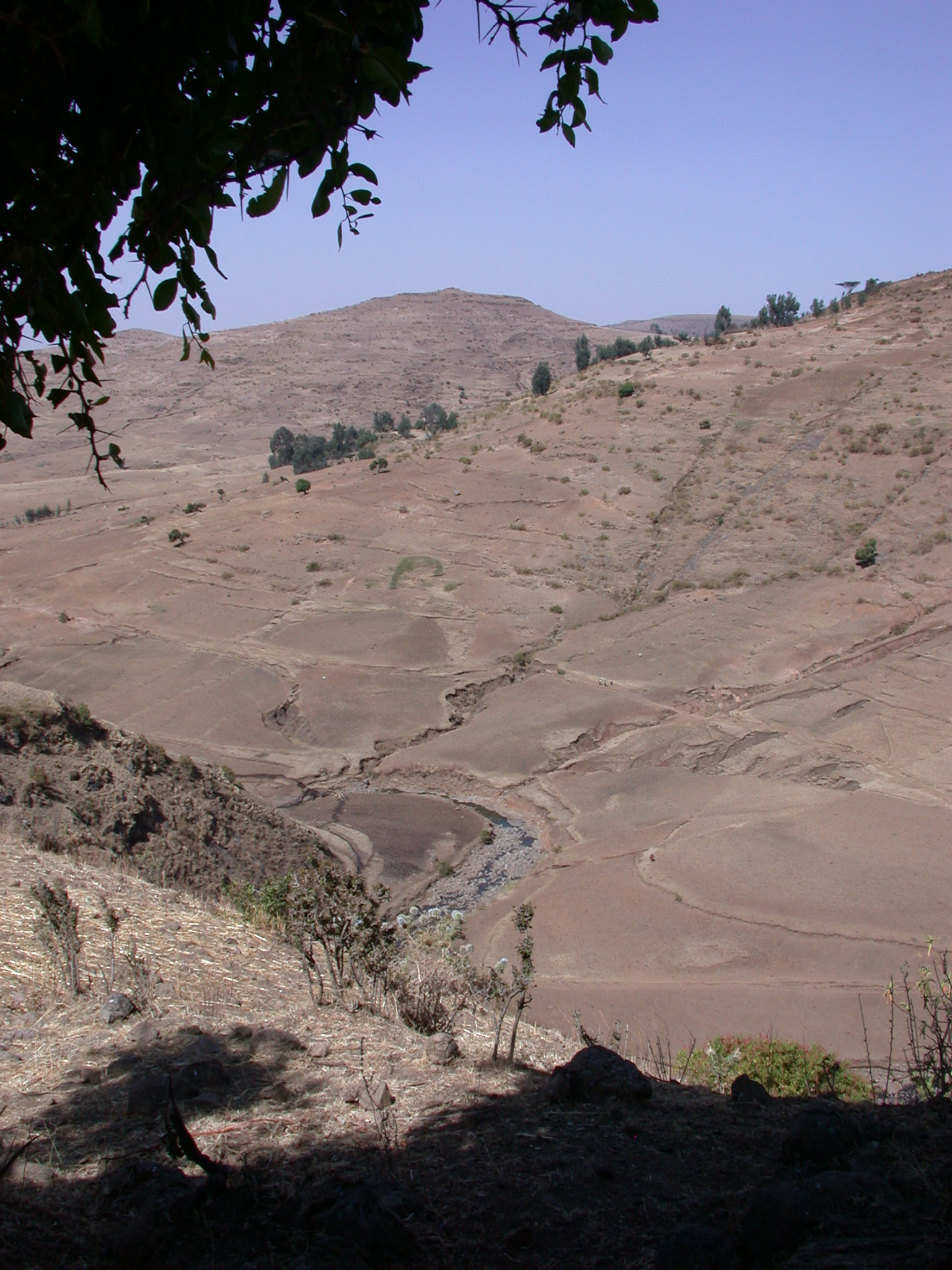
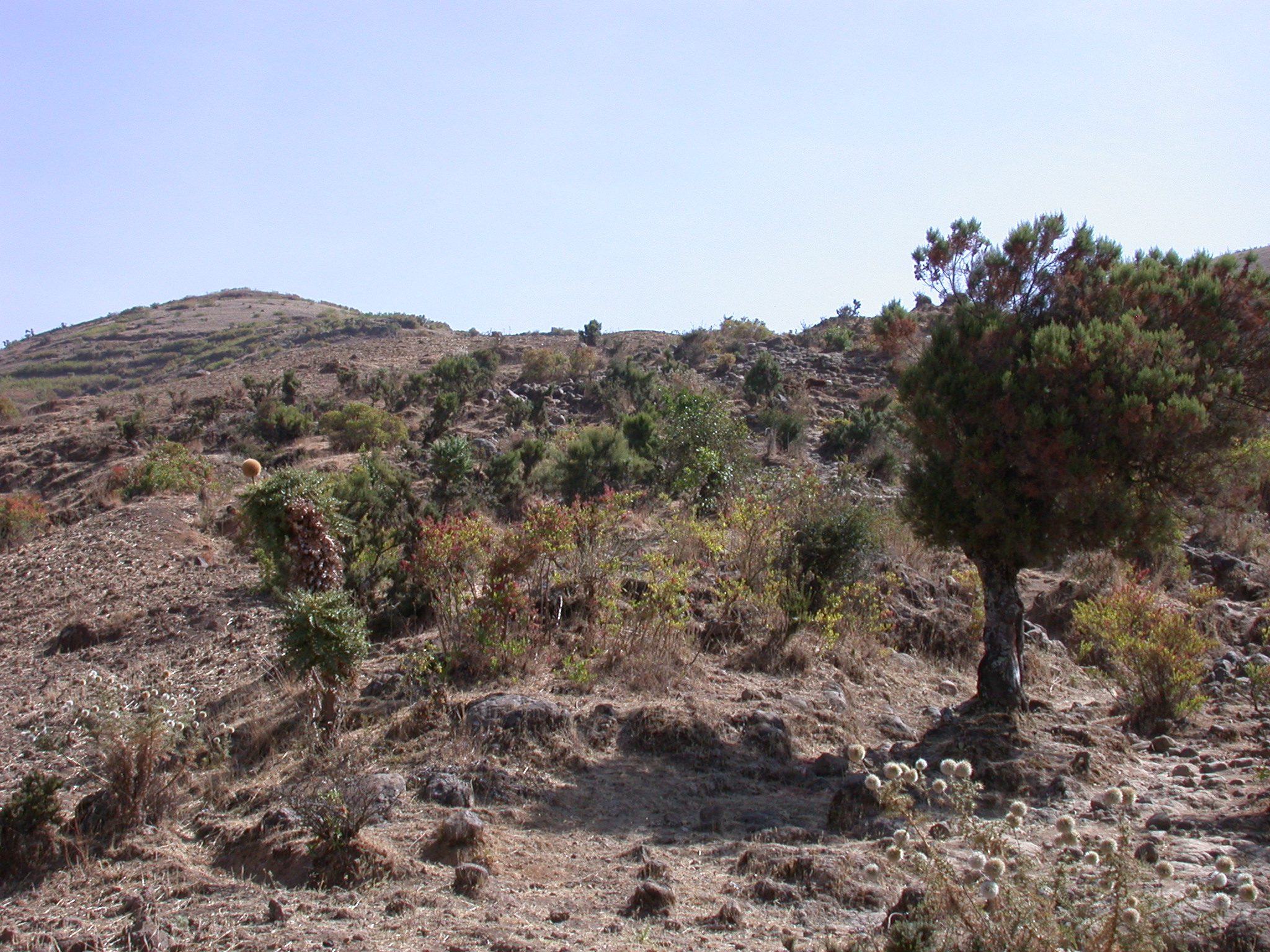
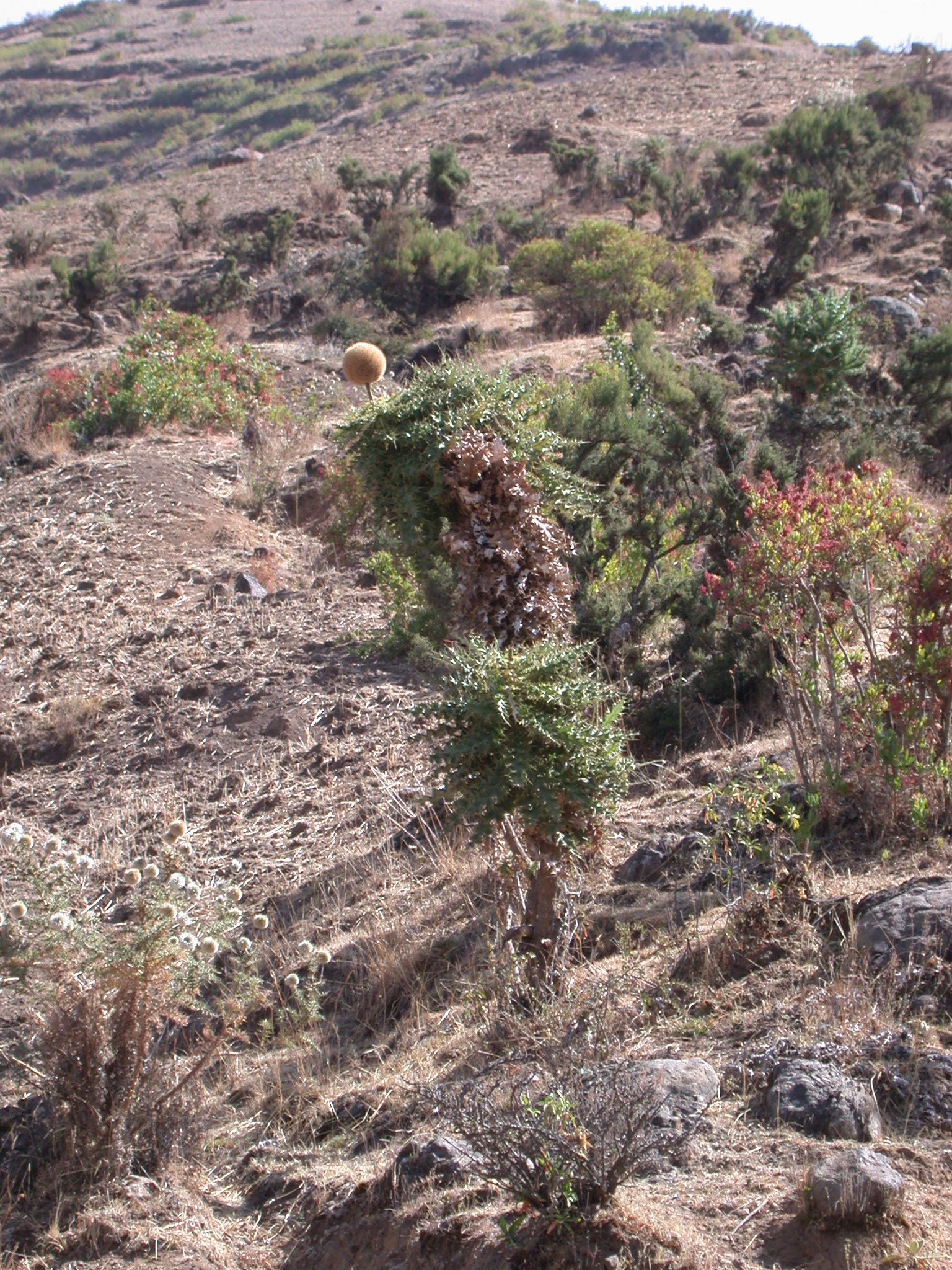
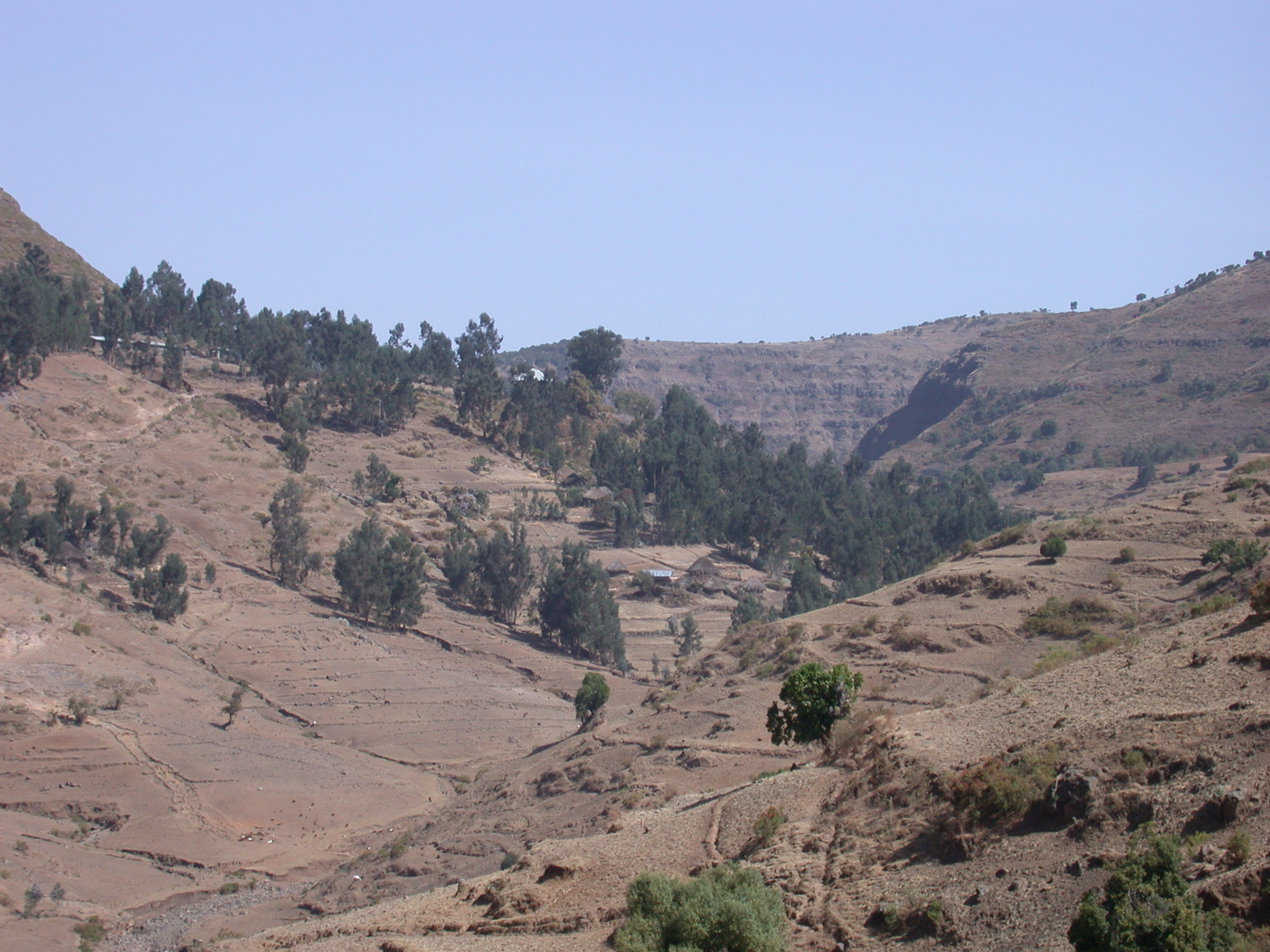
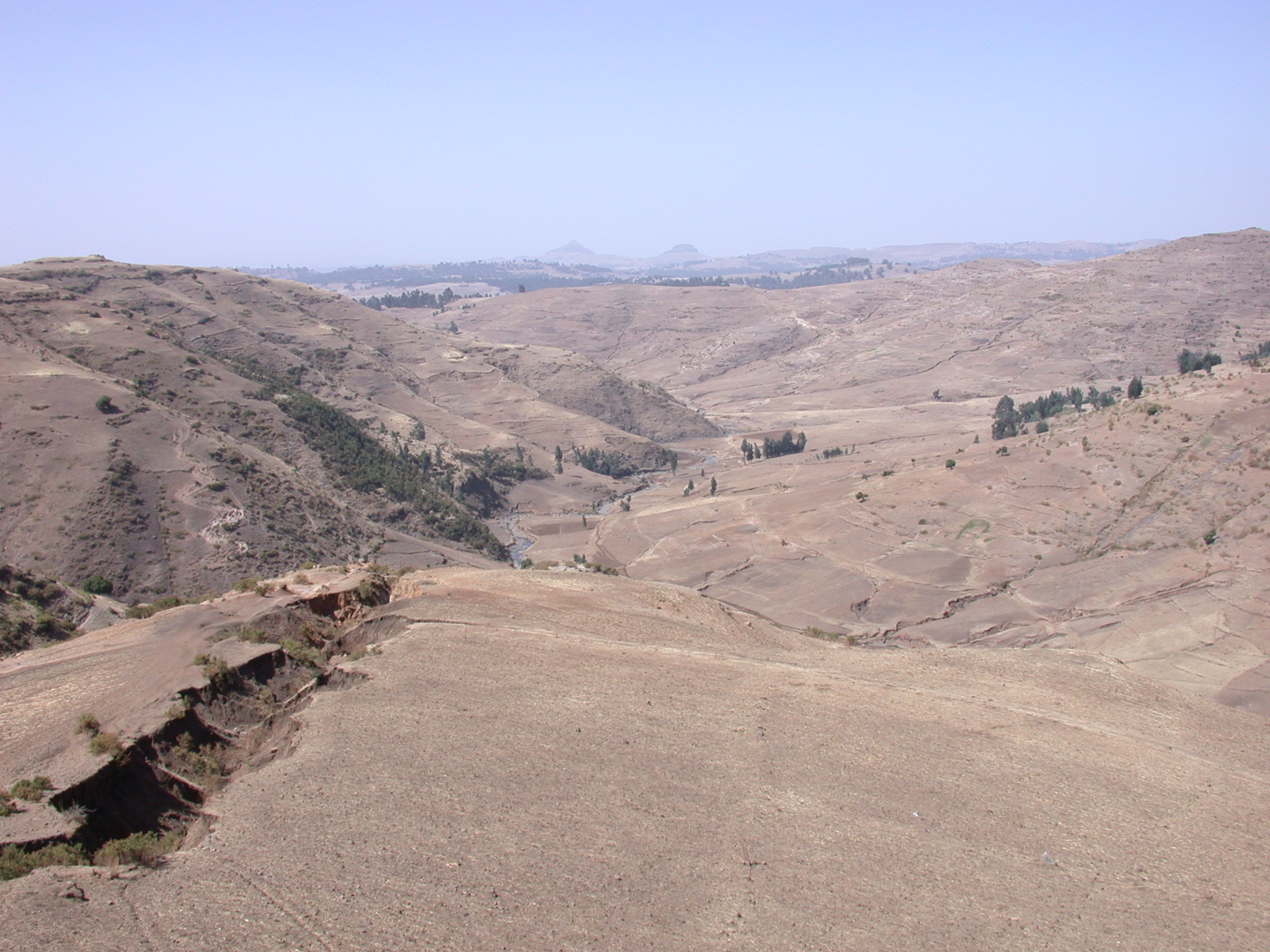
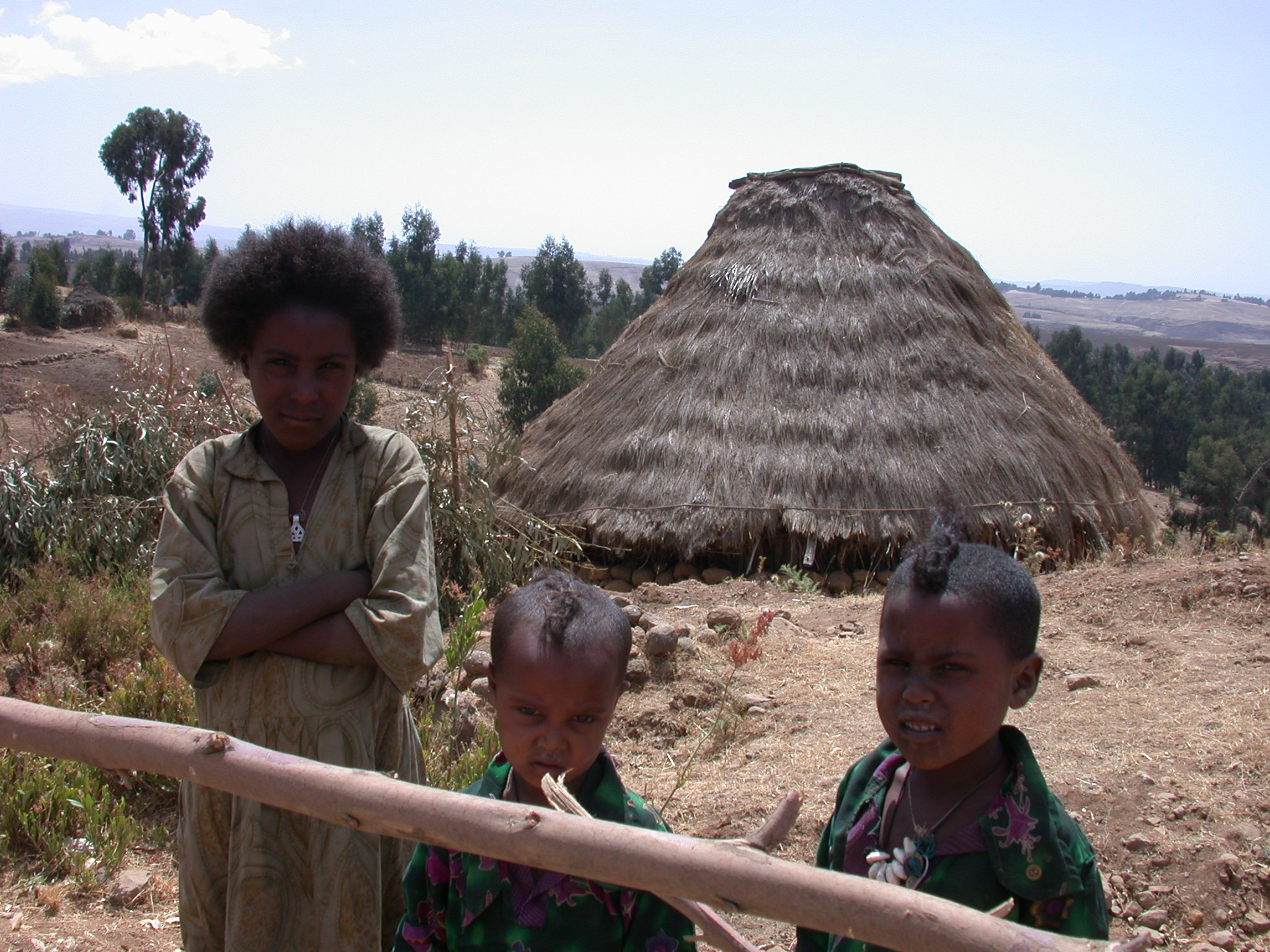
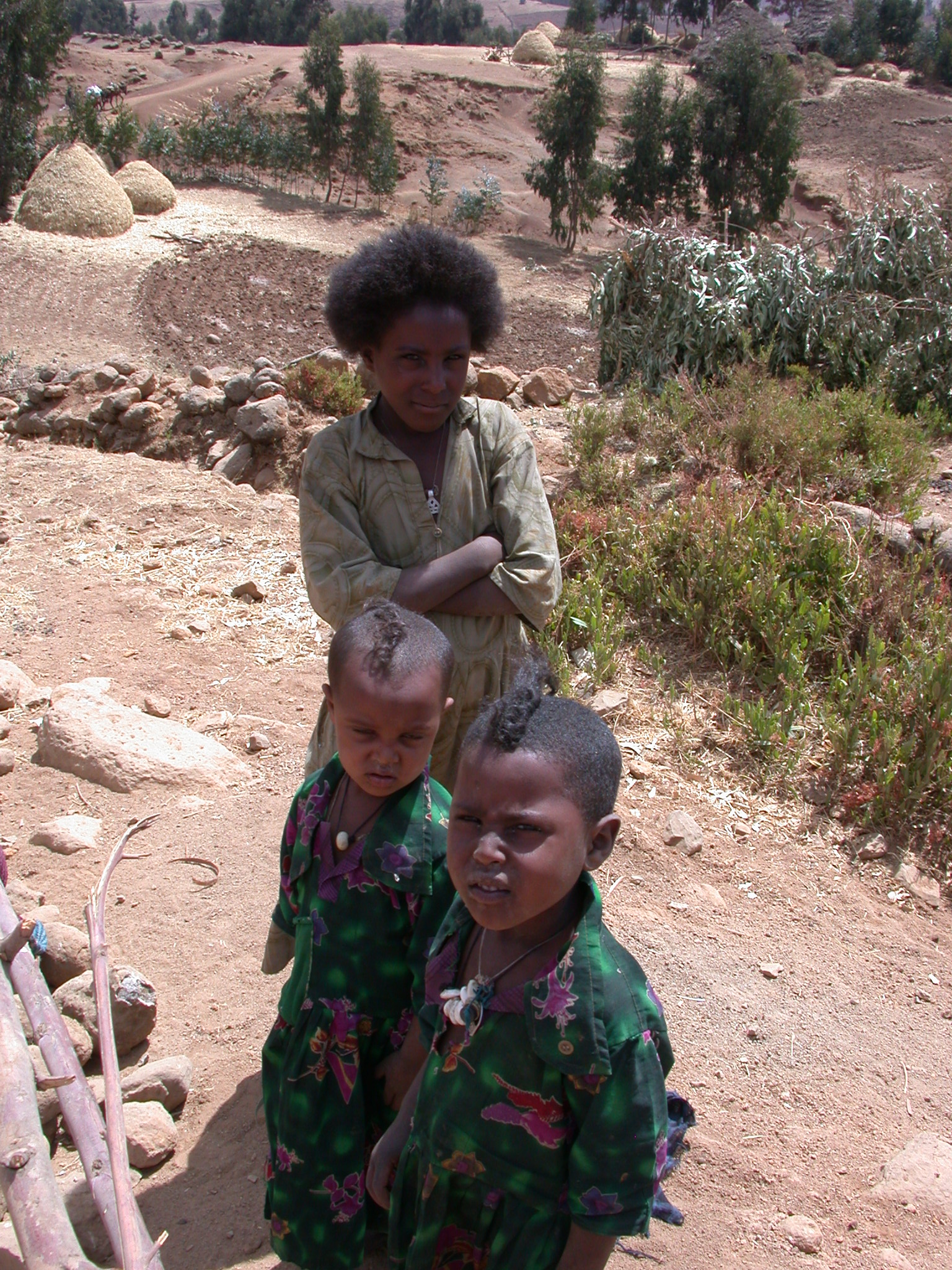
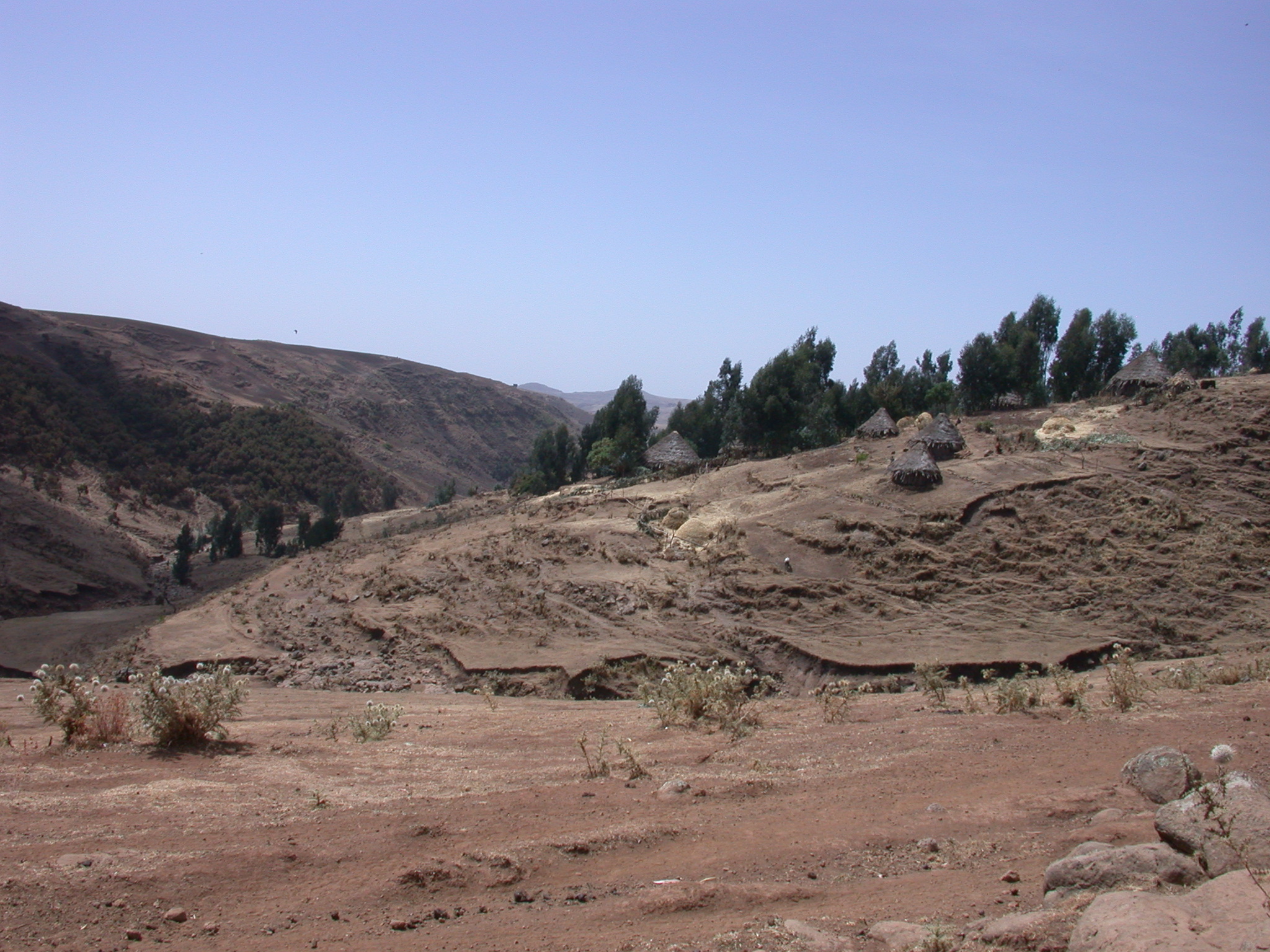
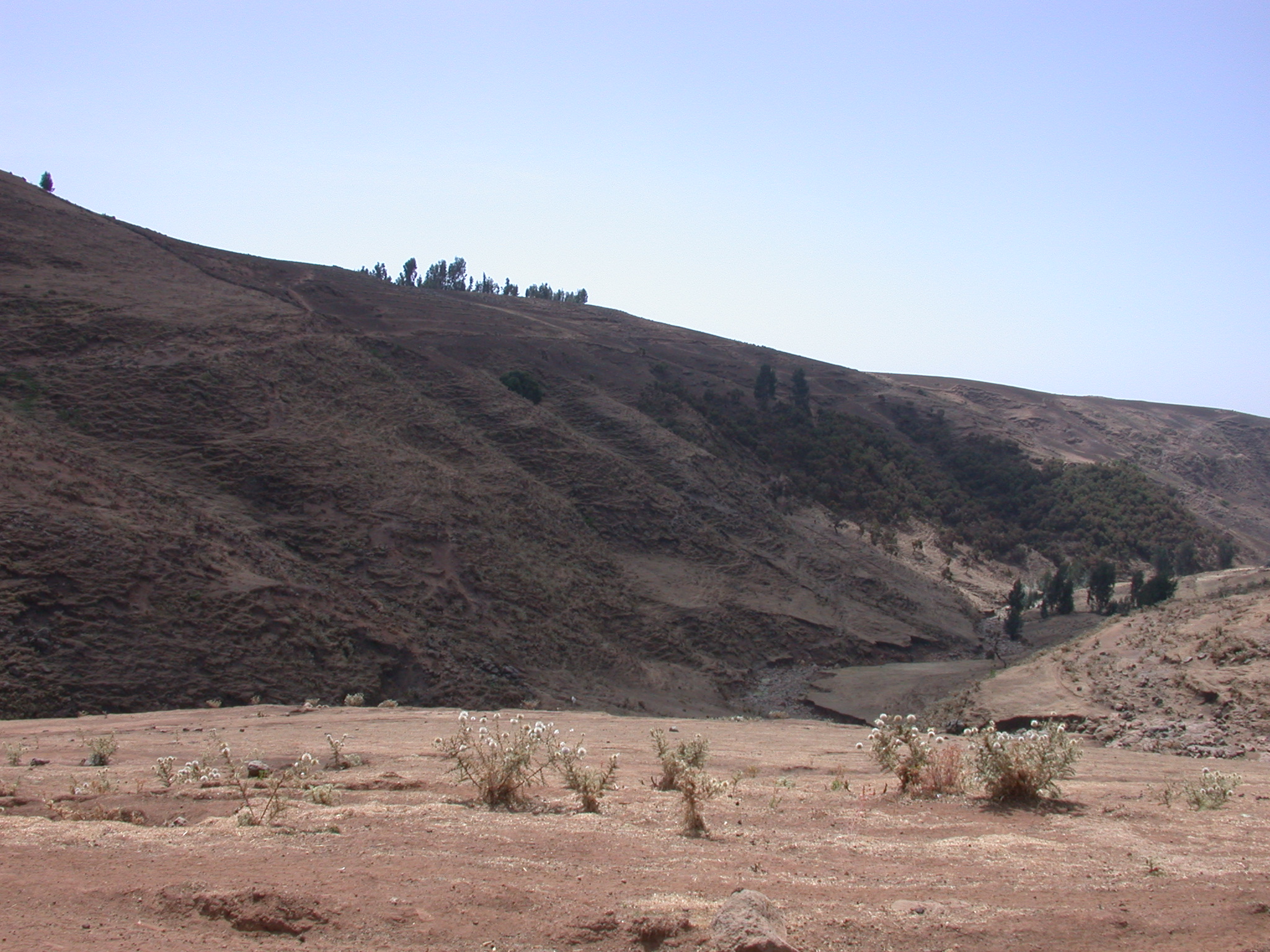
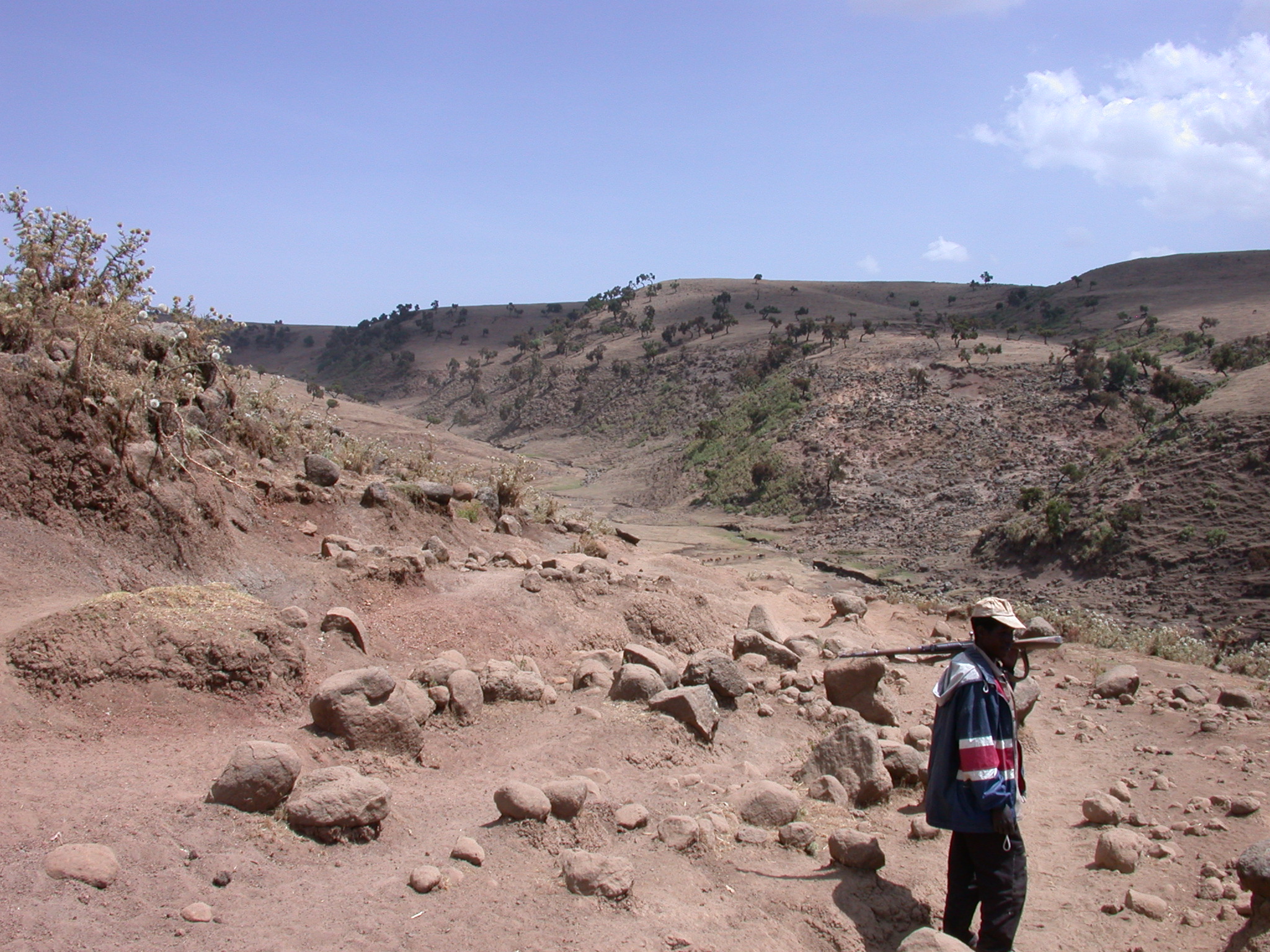
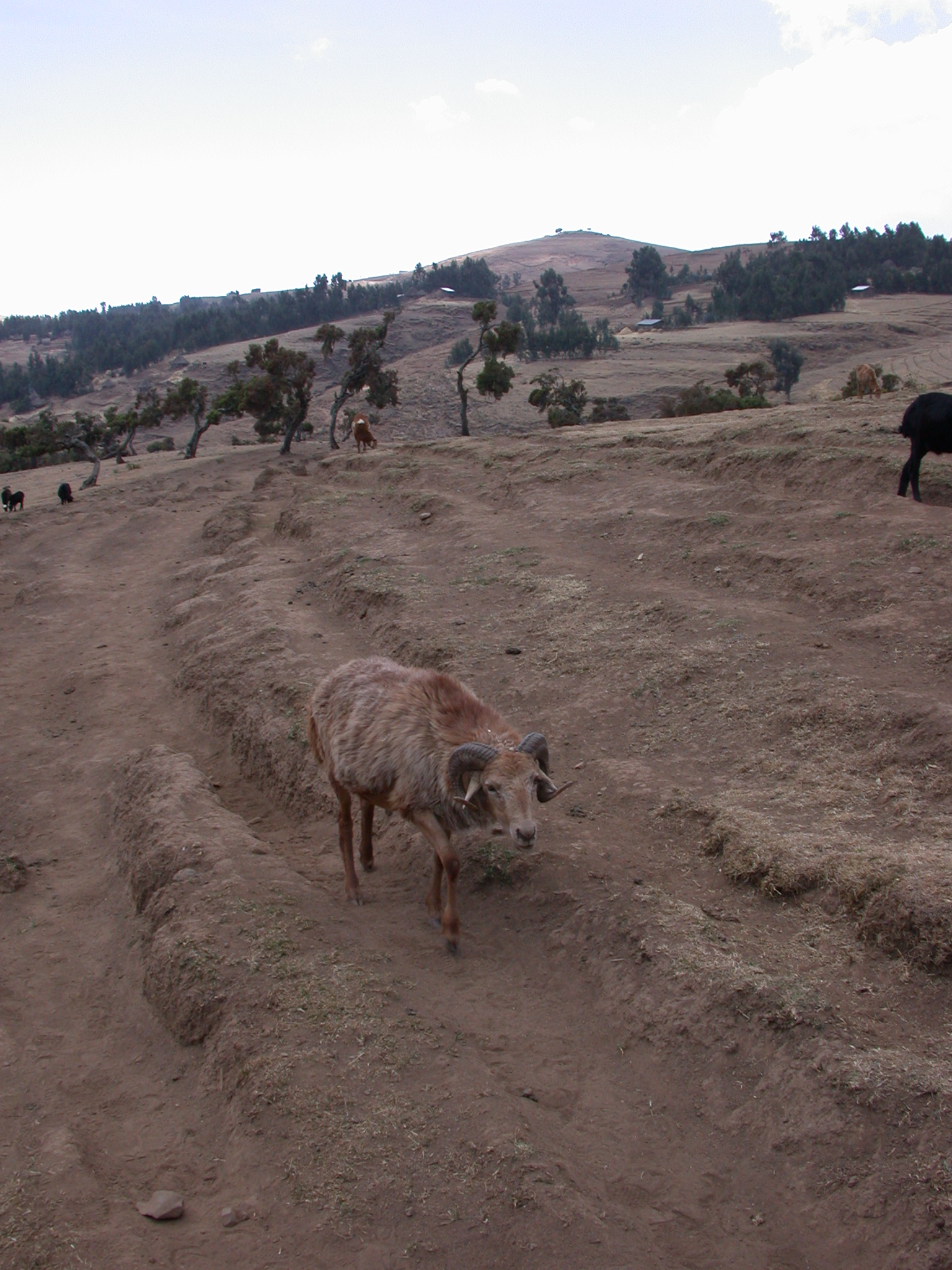
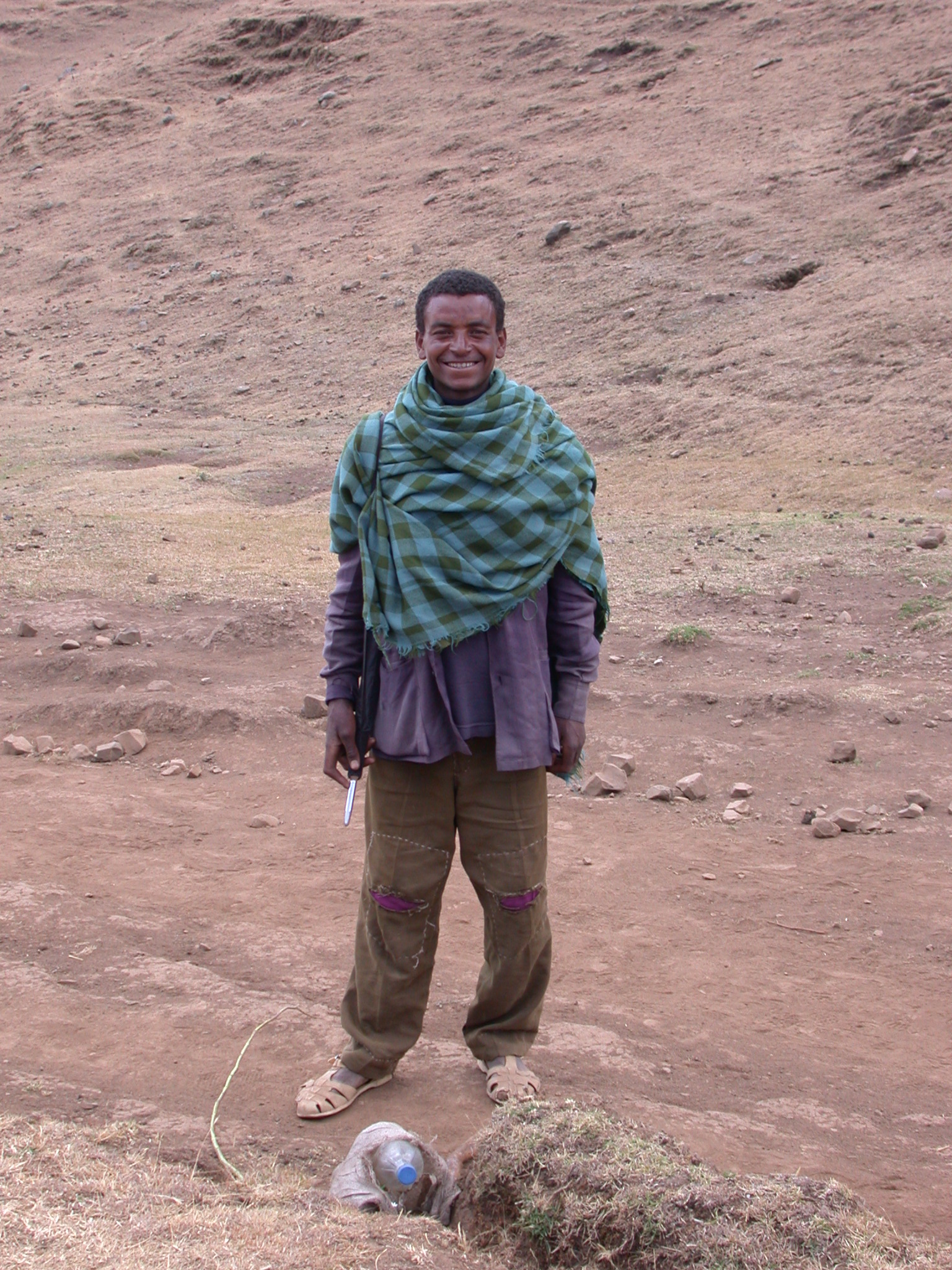
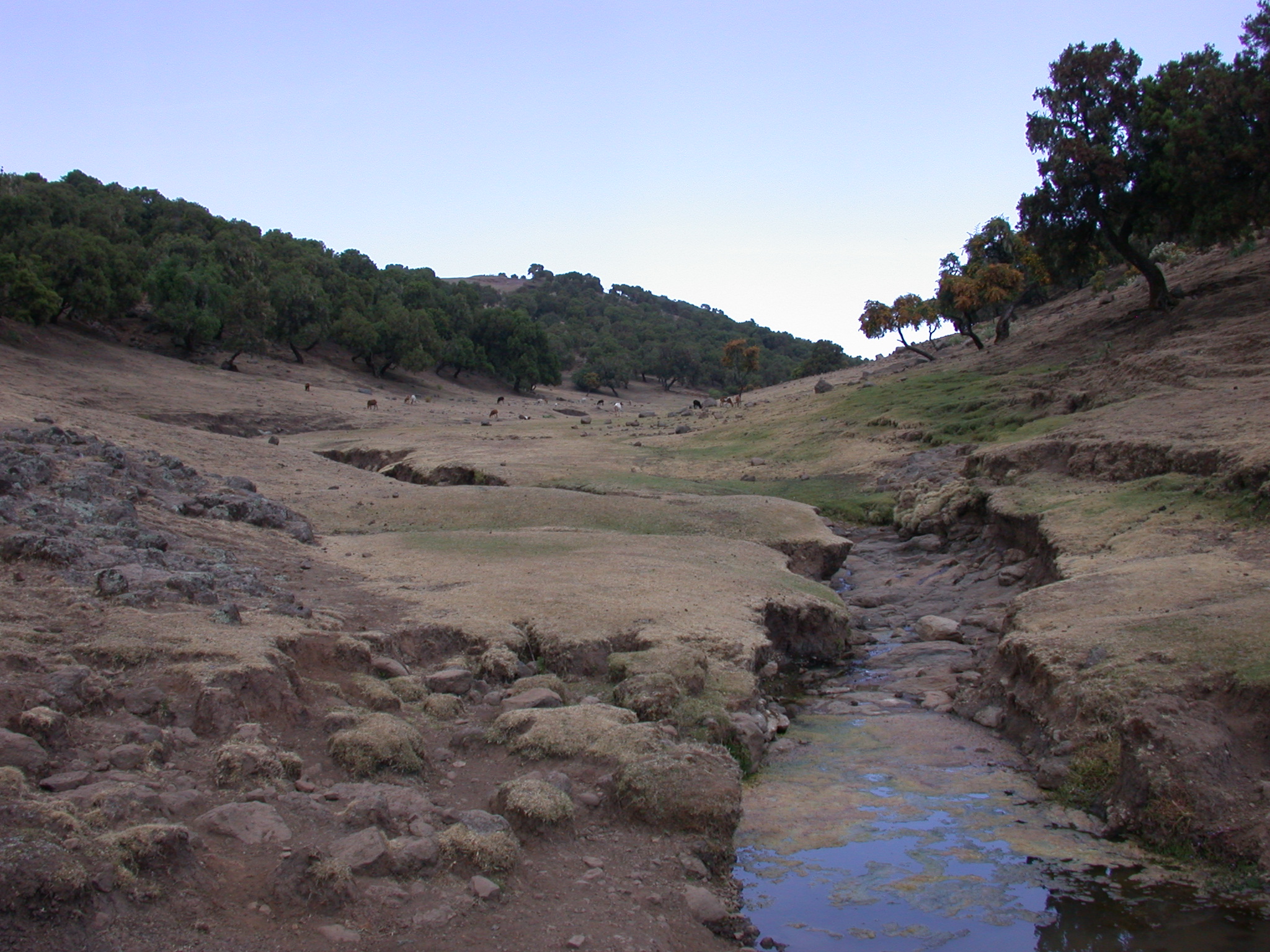
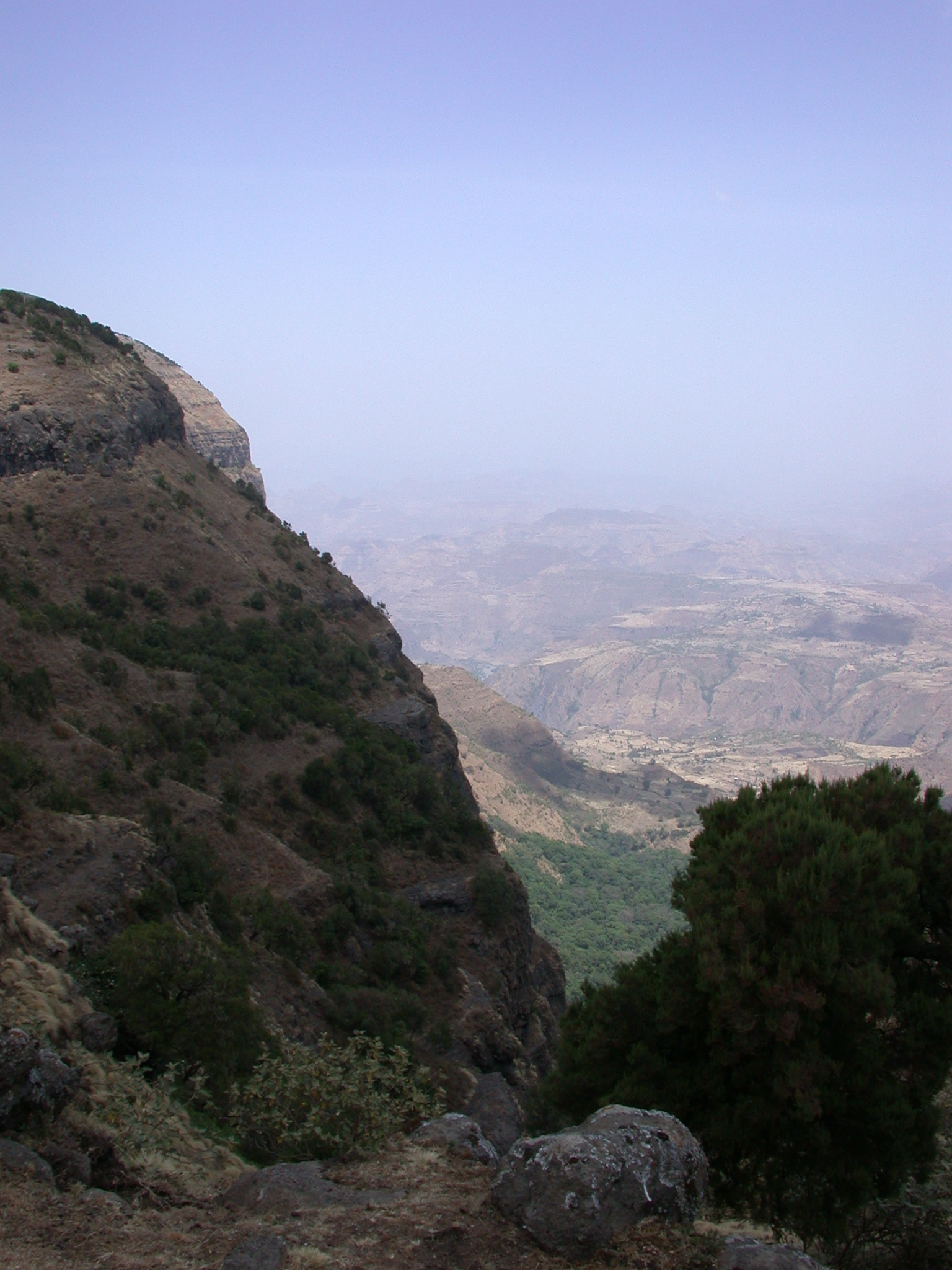
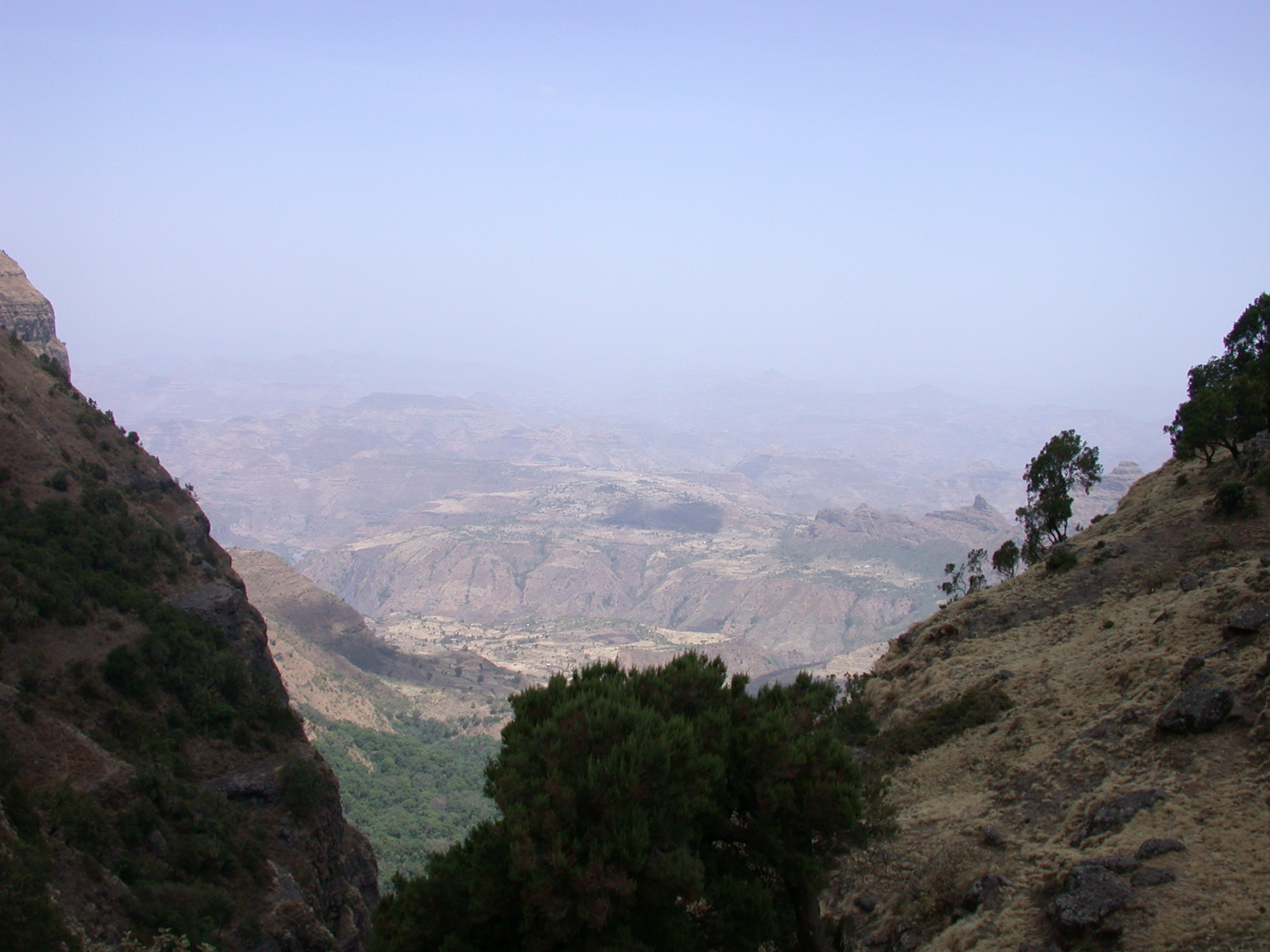
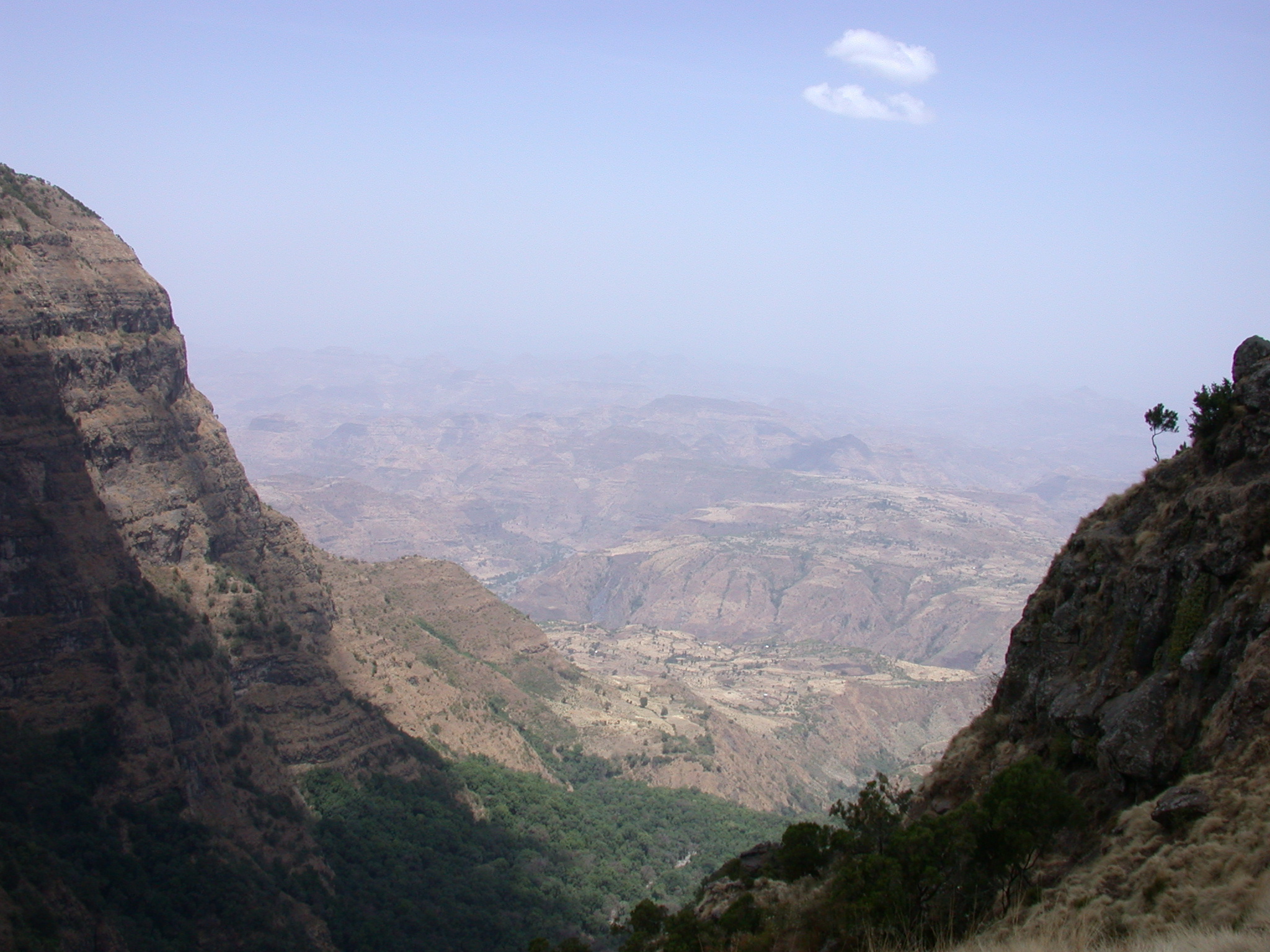
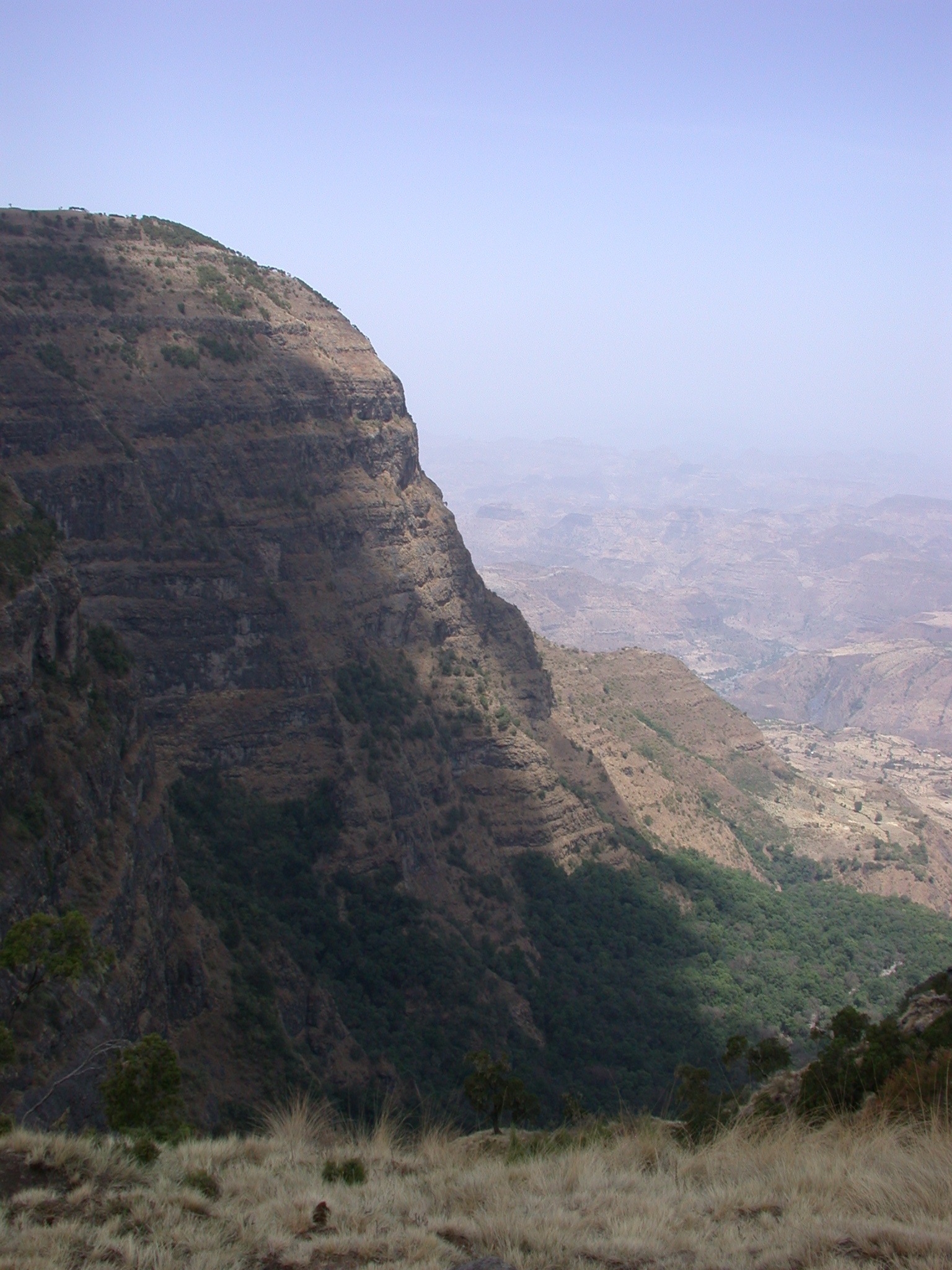
At this point, I felt really dizzy whenever I had to walk upwards. The horse and horse tender had taken a different path to camp. Finally, I told the scout I needed a ride in a car – I couldn’t walk the rest of the way. He still urged me to walk. So, I lay down on two boulders near the road. He wasn’t happy. After awhile I puked between the boulders. Then, he understood i really was sick and helped me to get a ride.
We got a ride on a truck to the first camp at Sankaber. Once in camp, I vomited again. We met up with the horse and horse tender who helped the scout move my stuff over to a primitive lodge where I spent the night of March 9 rather than trying to set up my tent. i had to pay about US$5 extra, but it was worth it. Even though I didn’t want any food, I knew the scout and horse tender wanted to use my stove. So, I tried to help them with the instructions about how to use the stove. I was using it for the first time and the instructions said nothing about removing this little plug blocking the fuel line. It took us quite a while to figure that one out, but eventually we got the stove working. I slept for a long time.
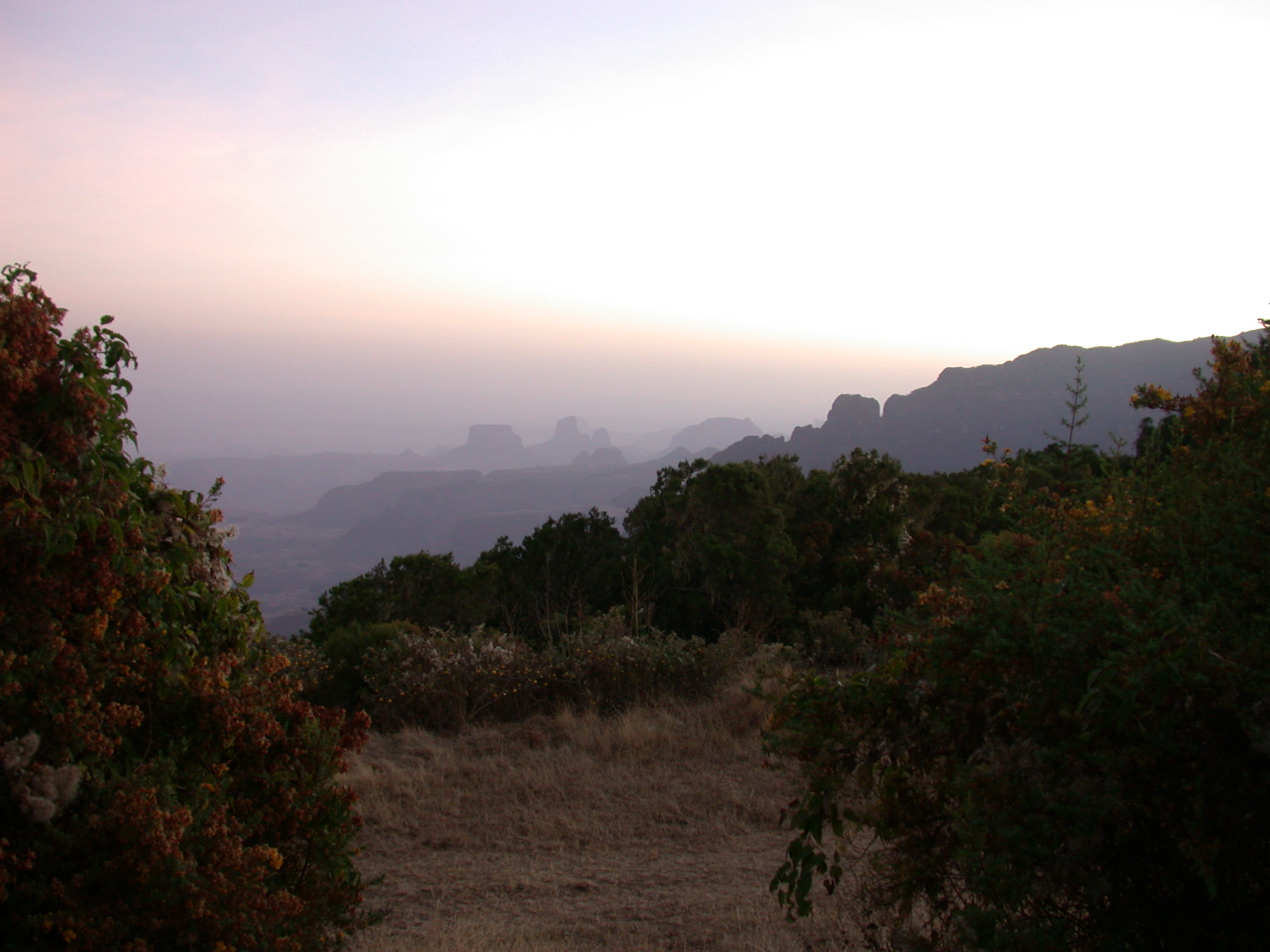
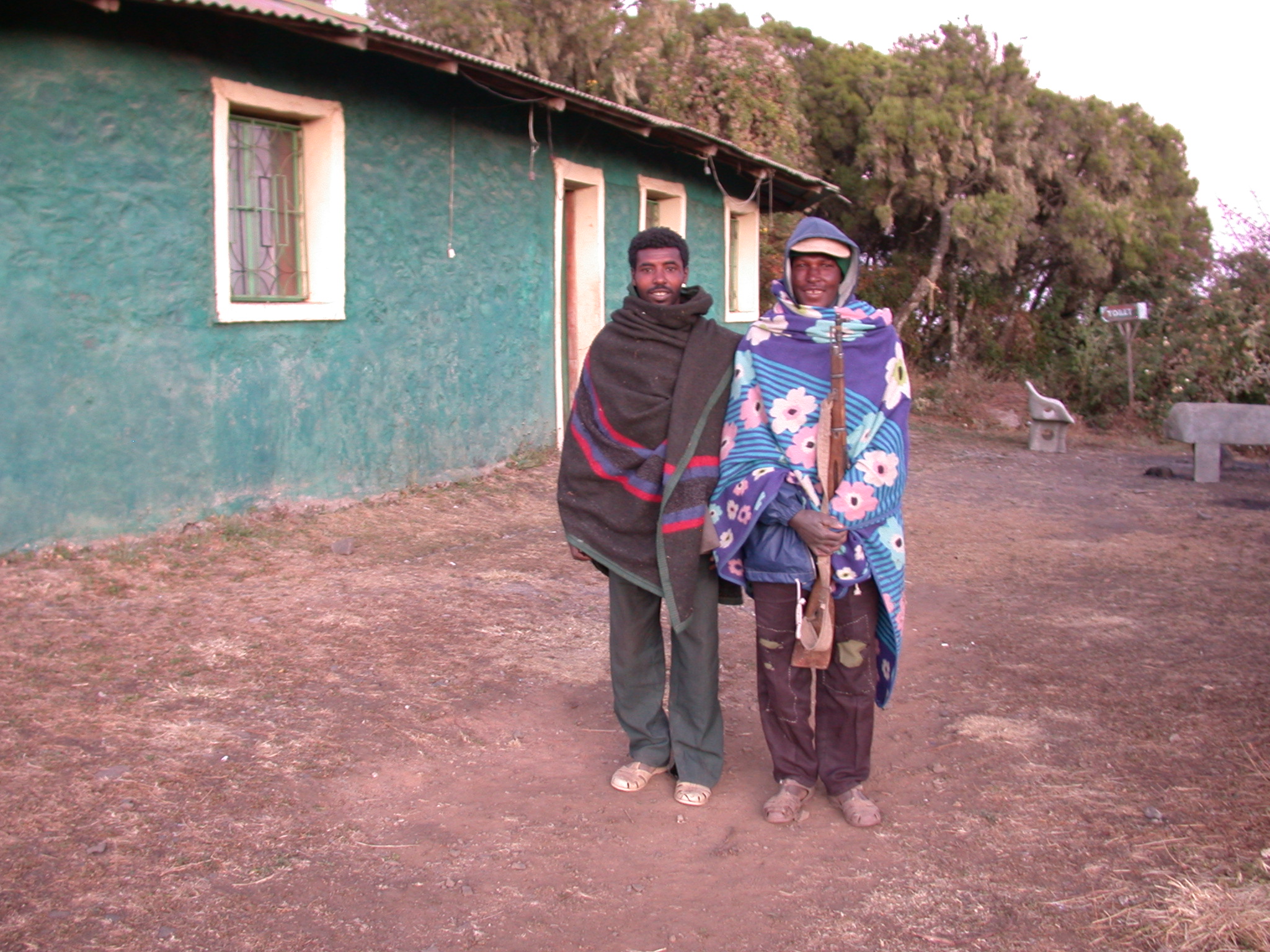
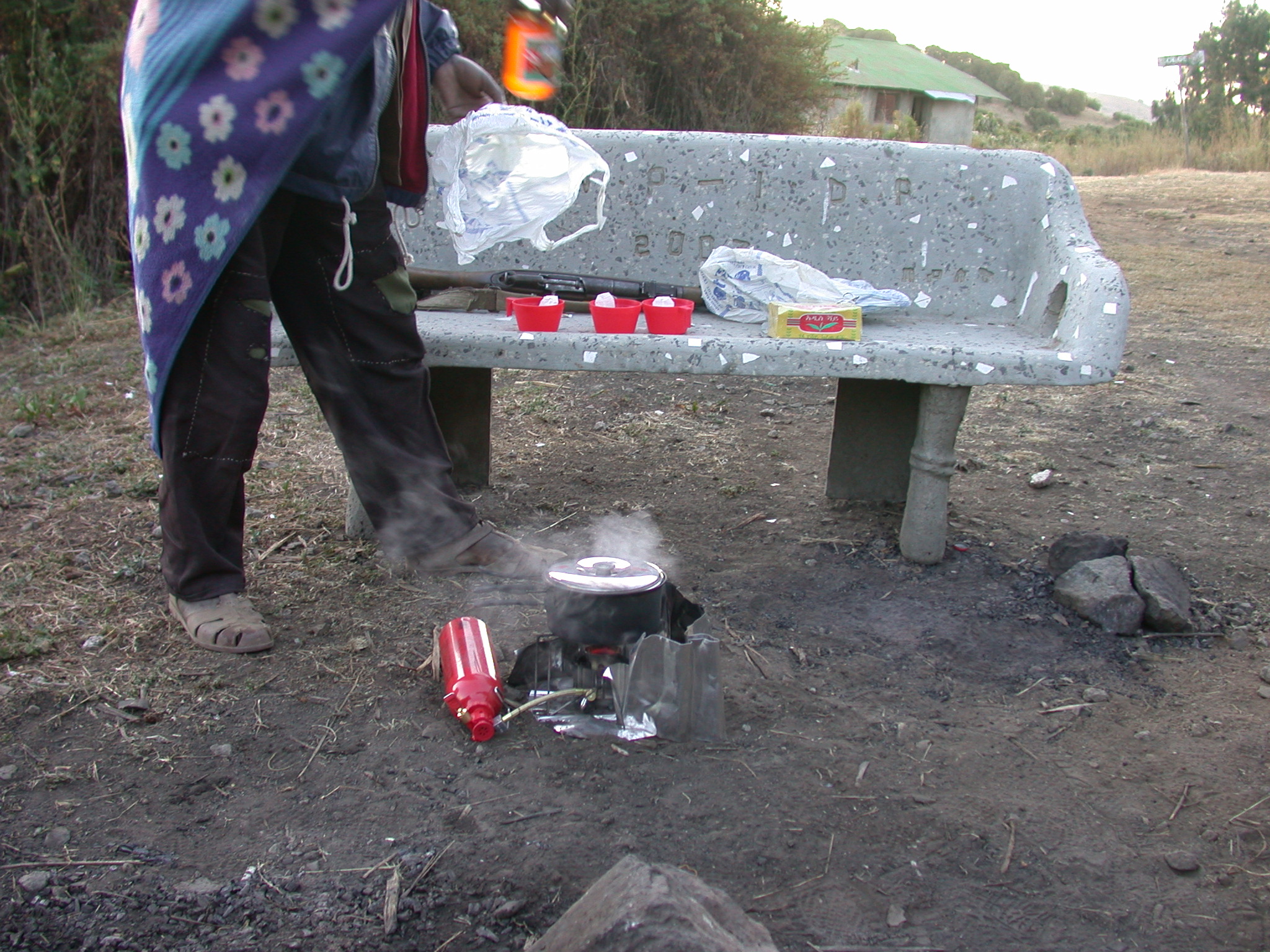
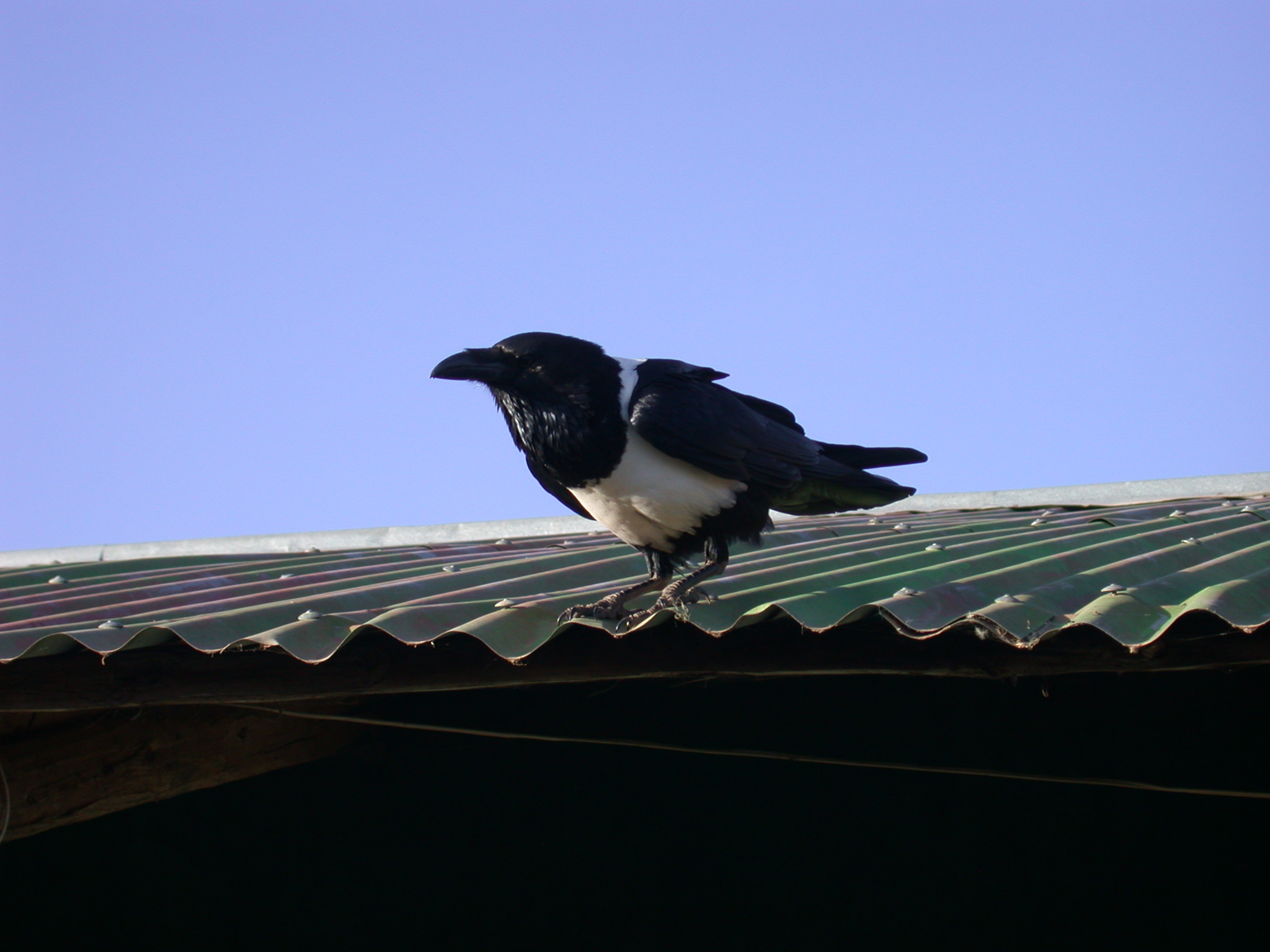
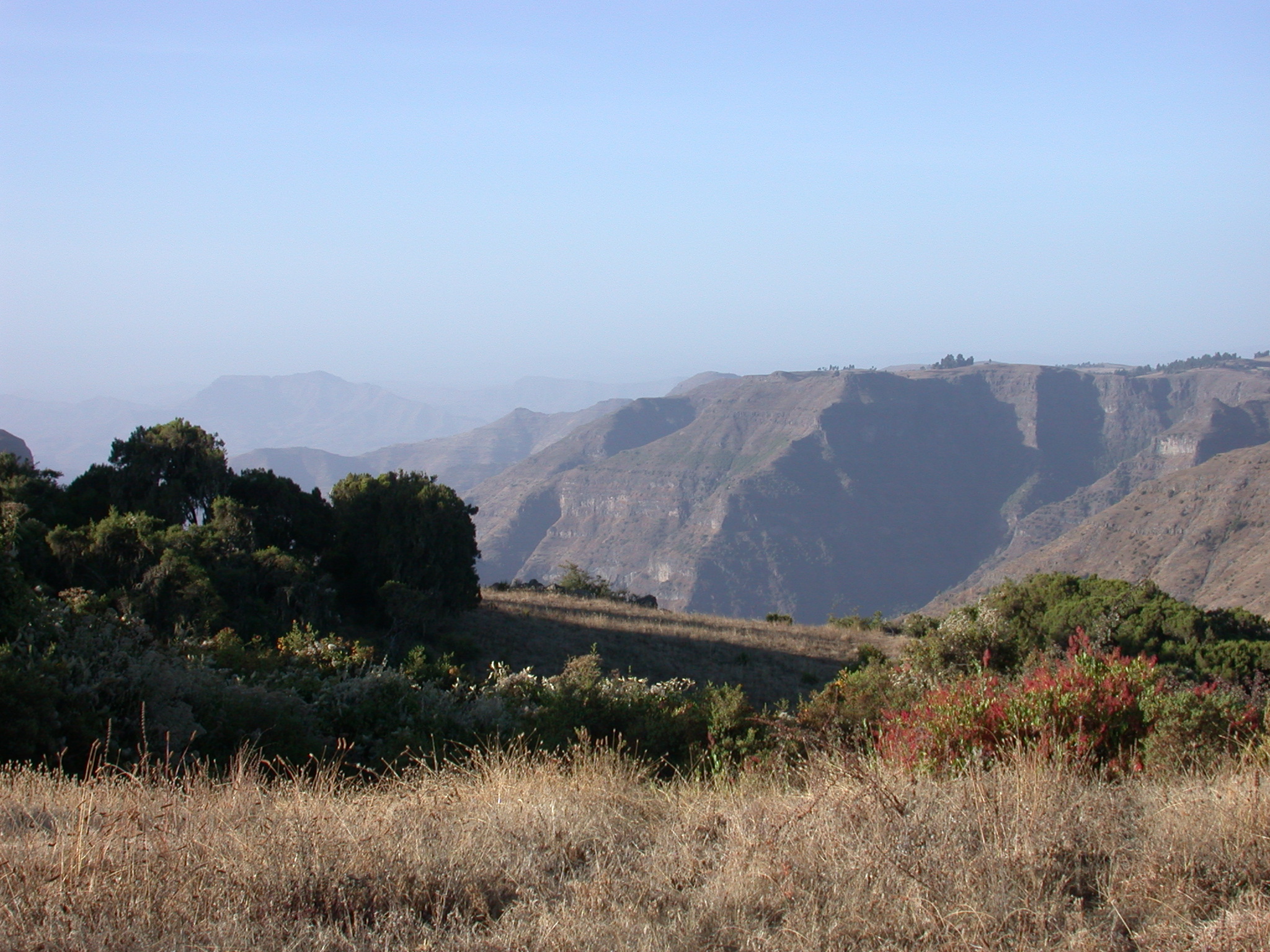
The next morning, on March 10, we made tea using my stove. I still felt sick as a dog and wanted to head back to Debark, much to the disappointment of my scout and horse tender. I heard some ferengi were camping at Sankaber, so I went over to talk with them. It turned out to be some Canadians I had met at Belegez Pension. Unfortunately, they were going up the mountain rather than down, so I couldn’t hitch a ride with them. Instead, scout and I got a ride on a minibus jammed full of people. The scenery on the ride down was wonderful, and eventually I did get to sit on the very edge of a seat for the rest of the ride down to Debark. In Debark, I rushed to get onto a bus to Gonder, that same very bumpy ride I had taken on the way from Gonder to Debark. I arrived in Gonder exhausted on the evening of March 10 and decided to recoup at the Belegez Pension. I spent March 11-12 recovering in Gonder.
